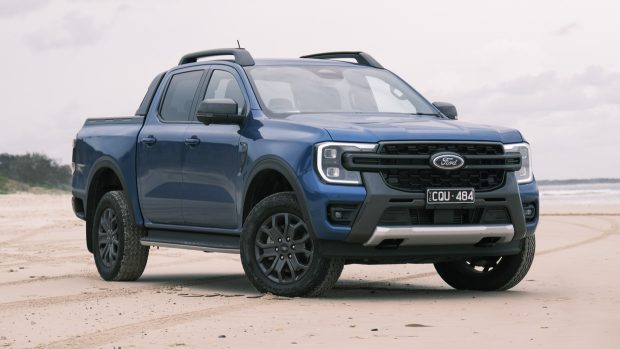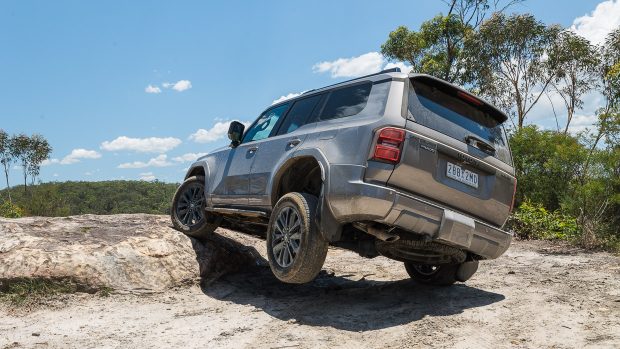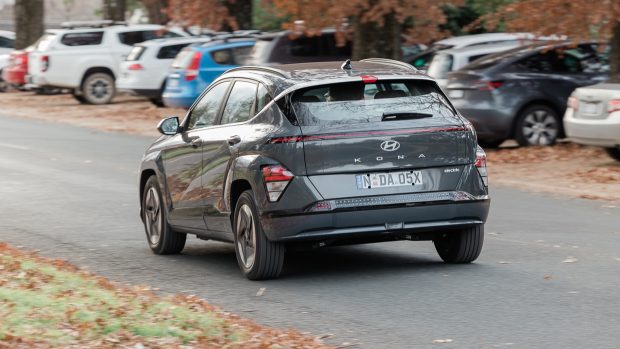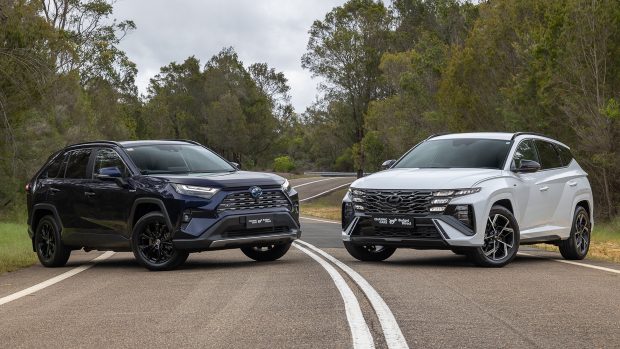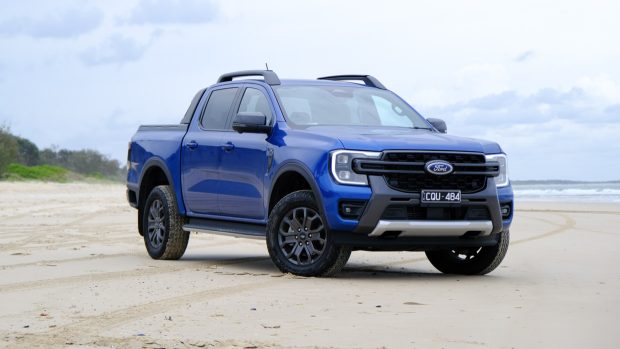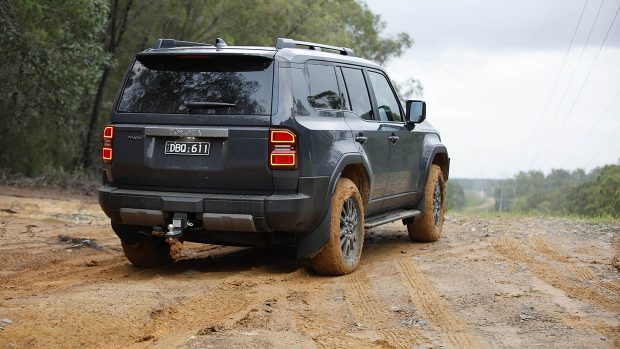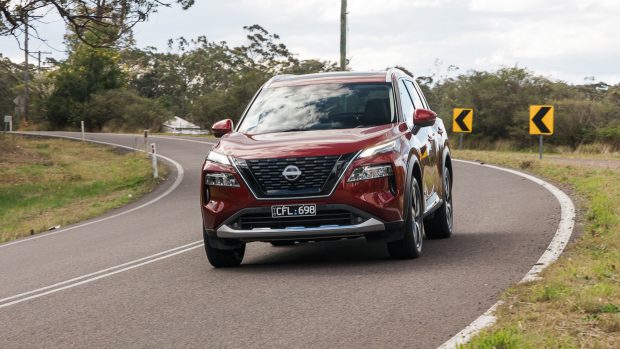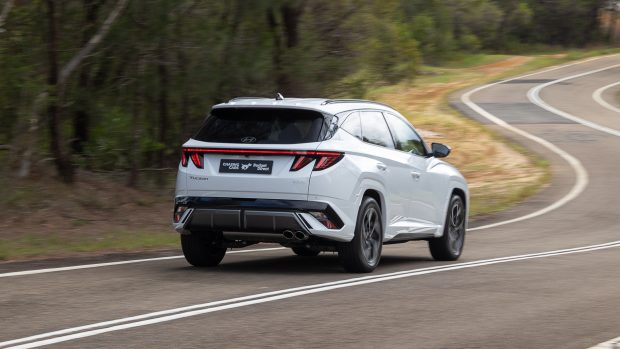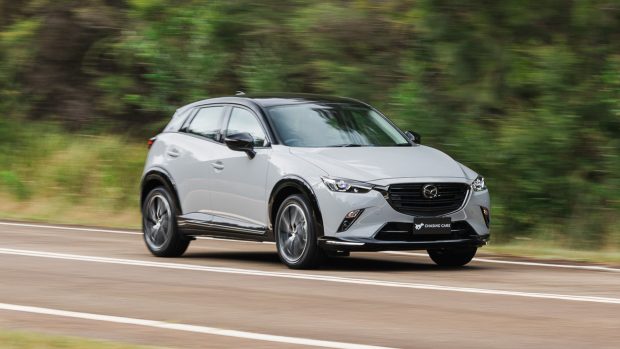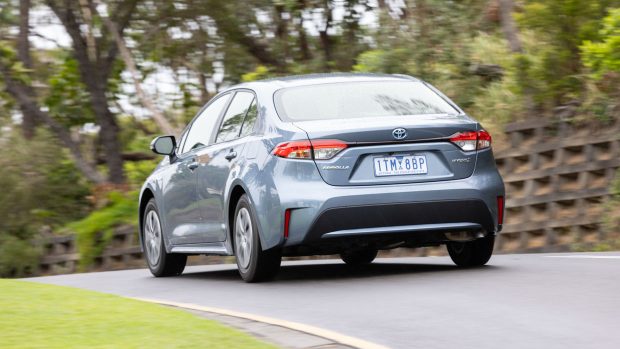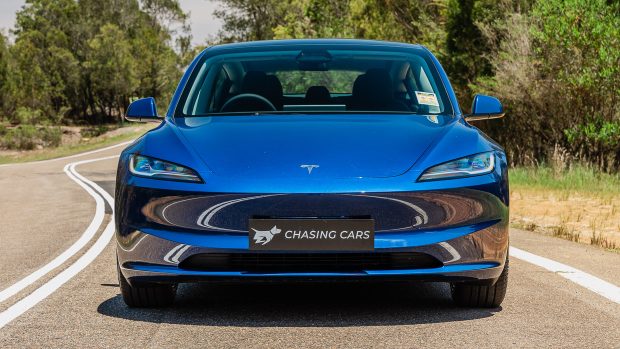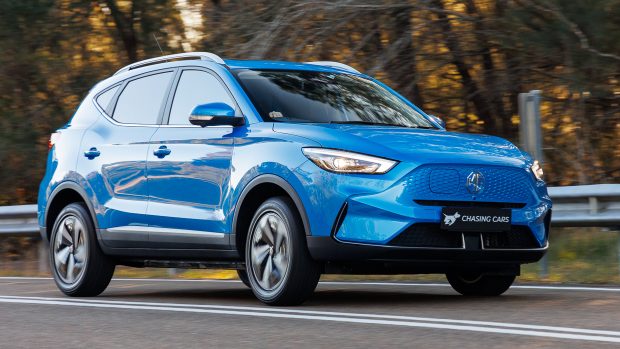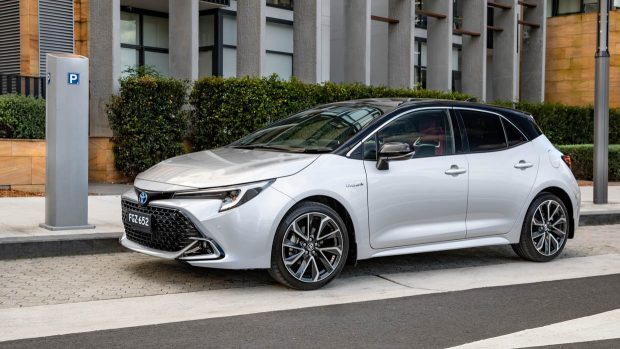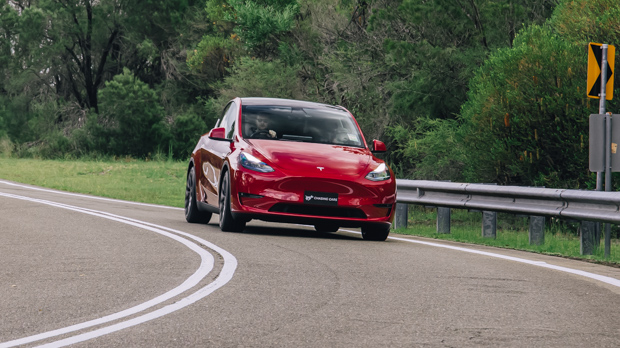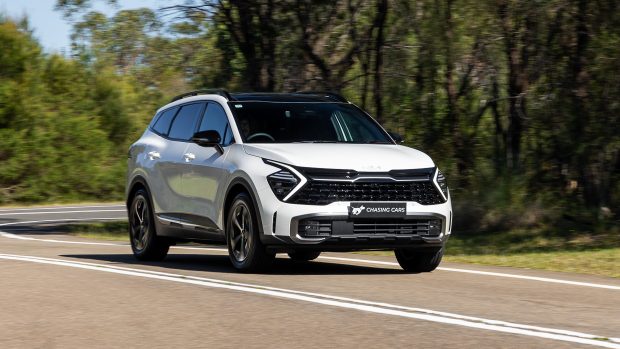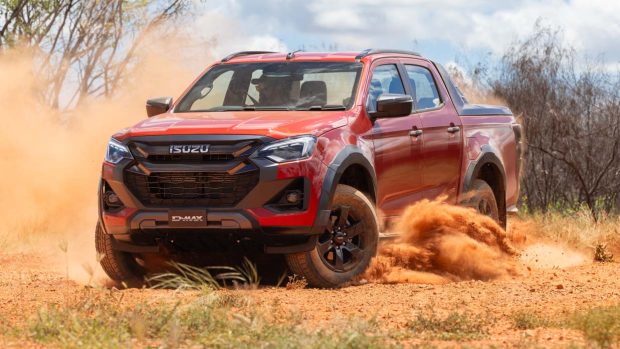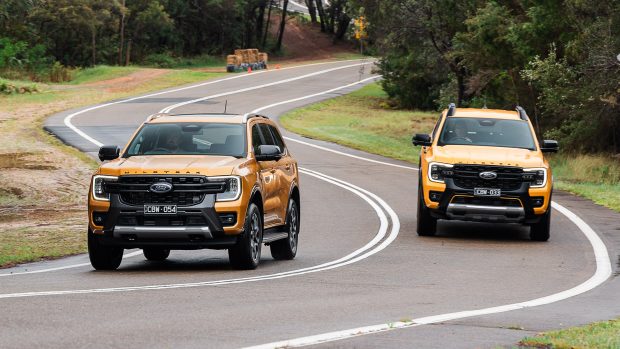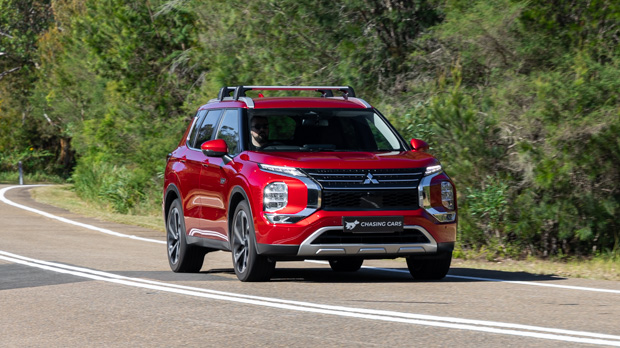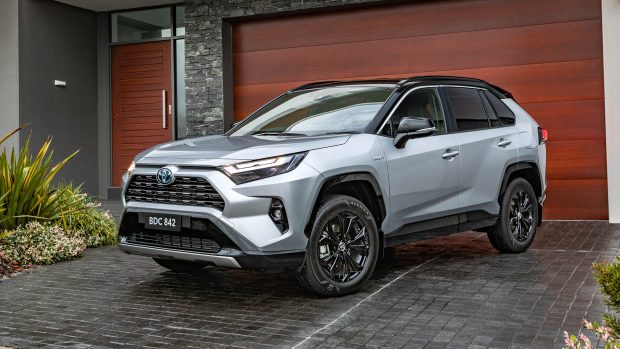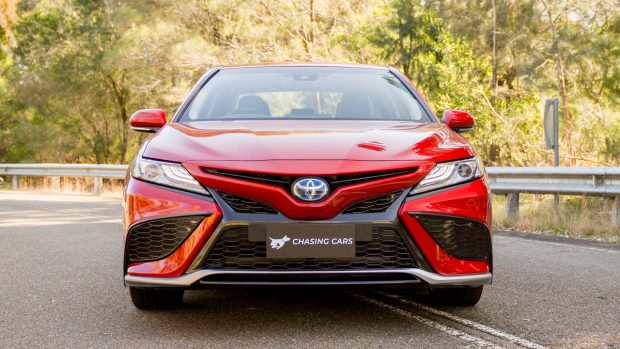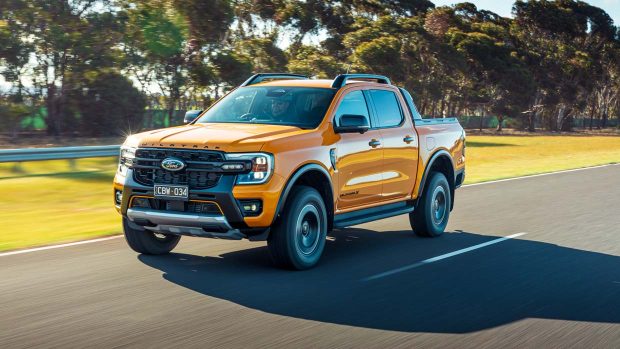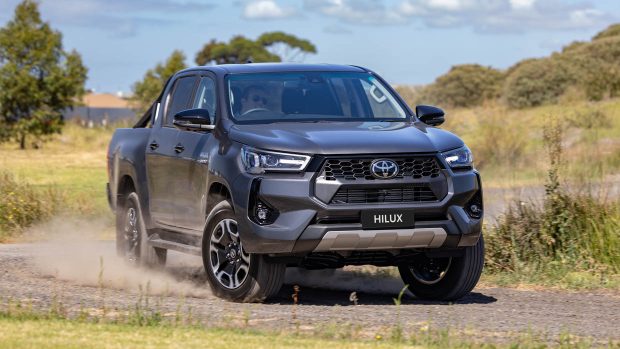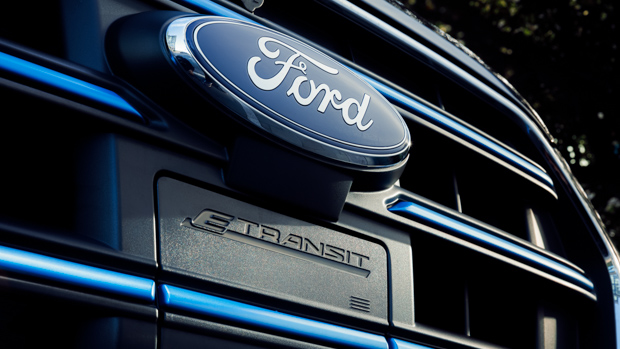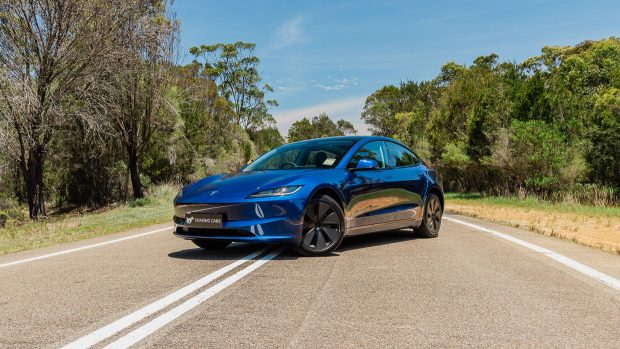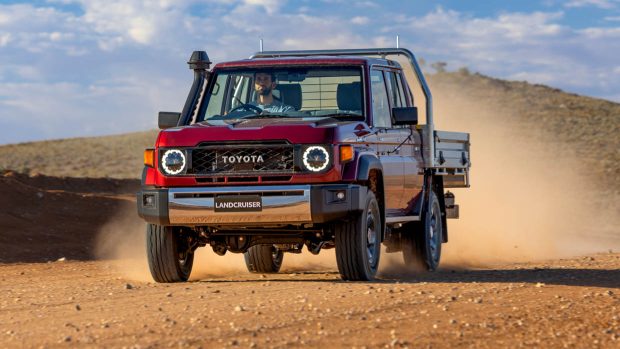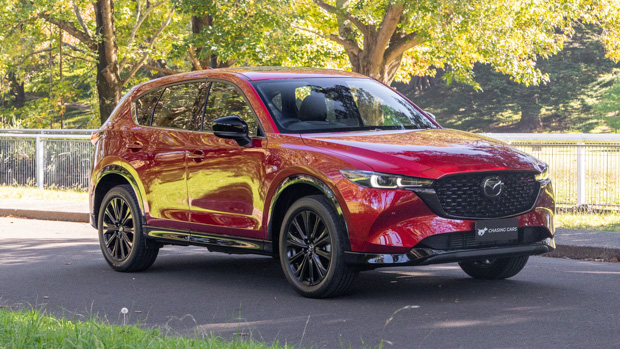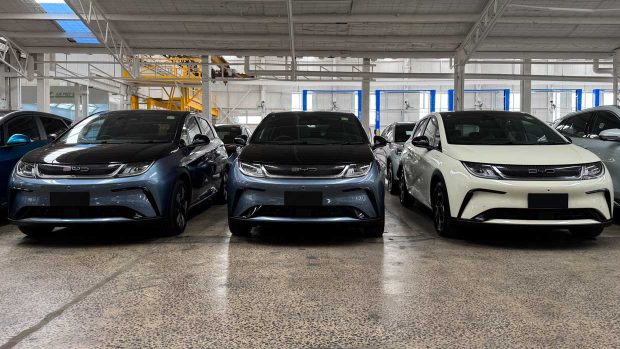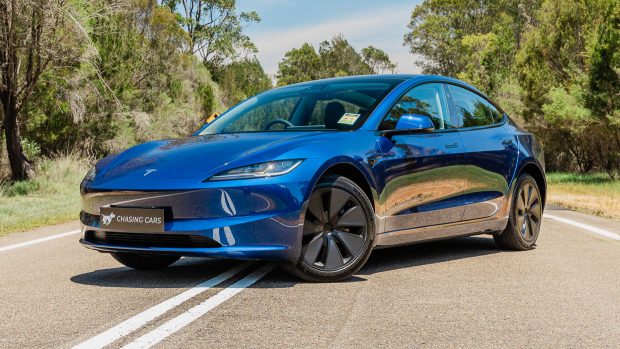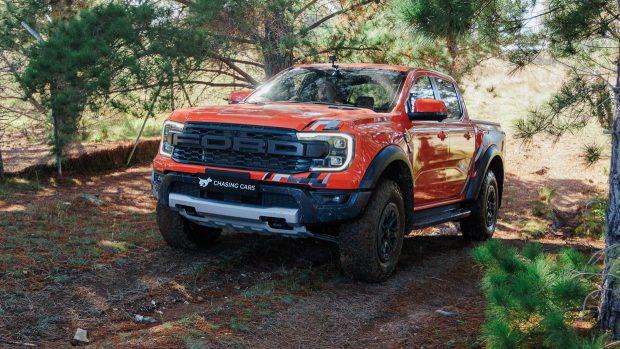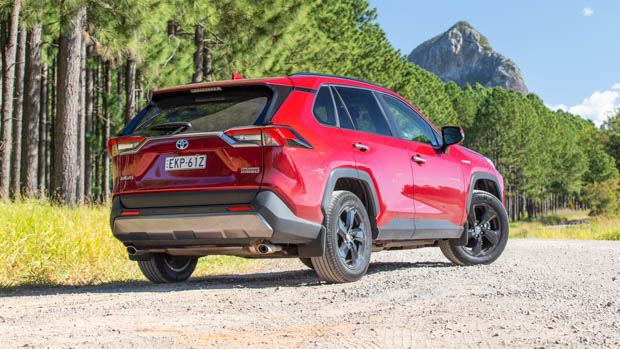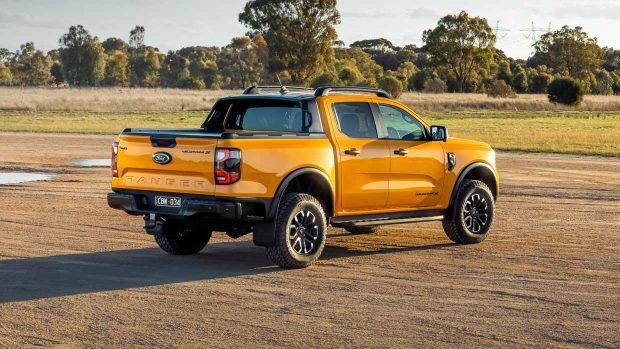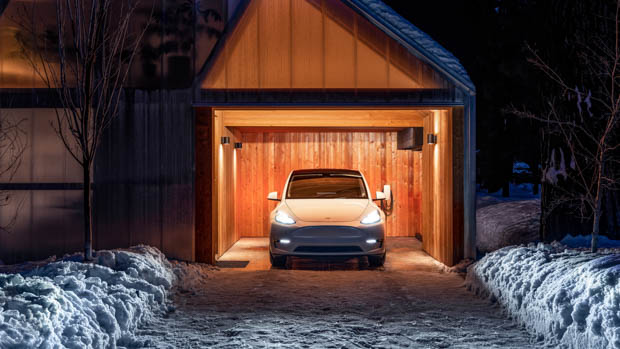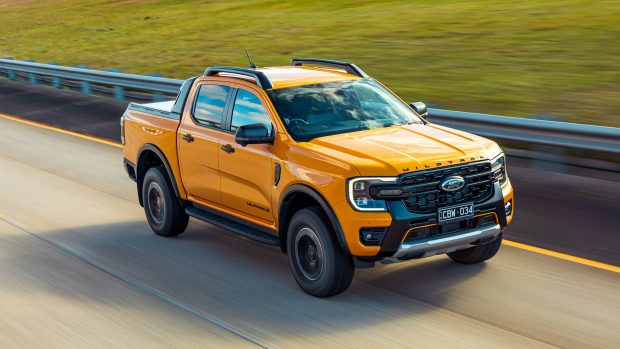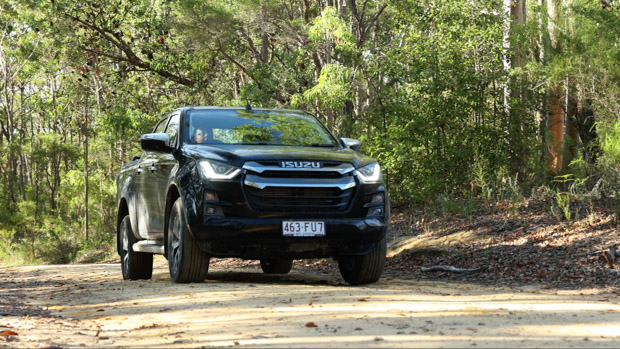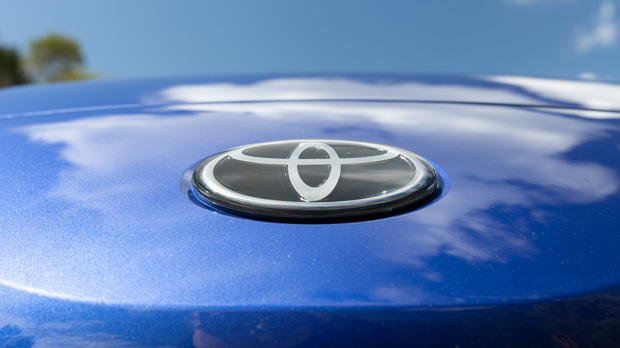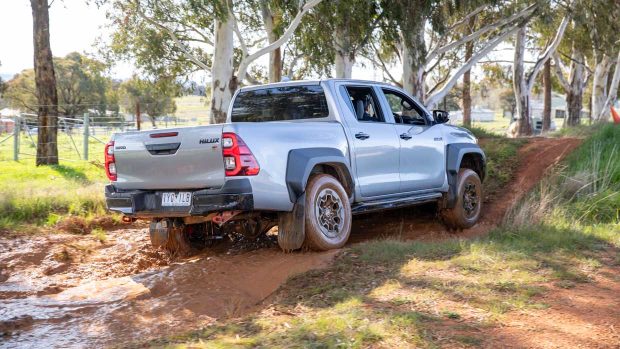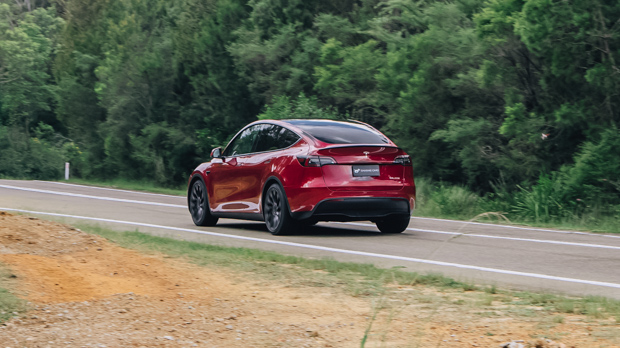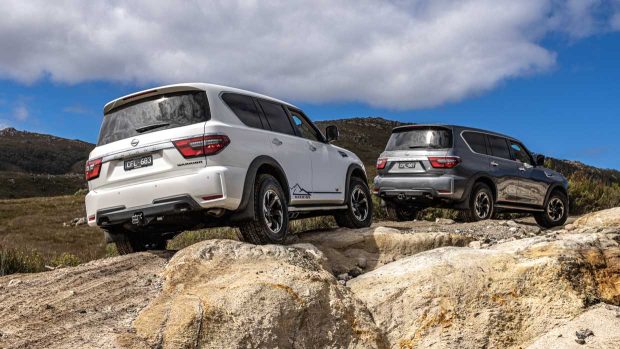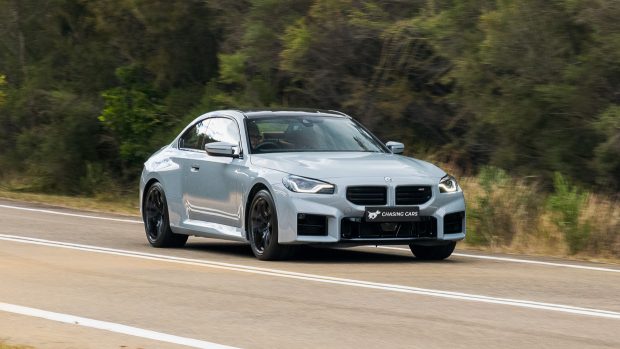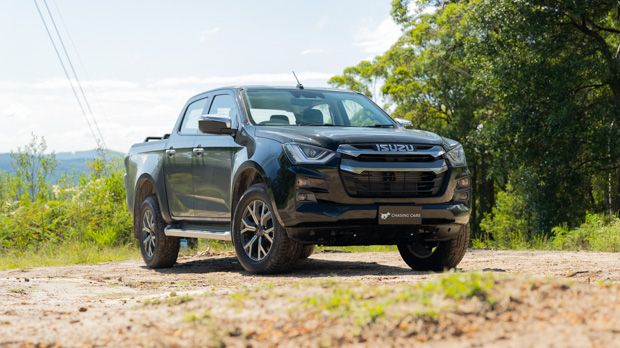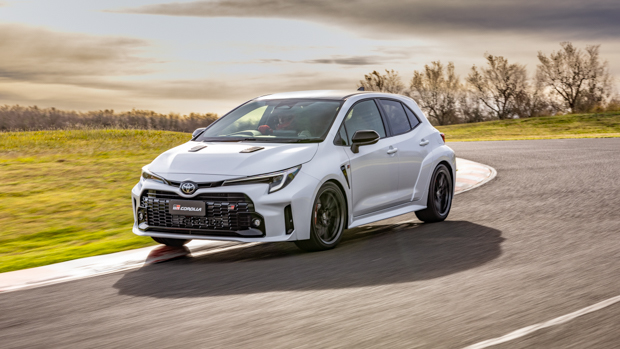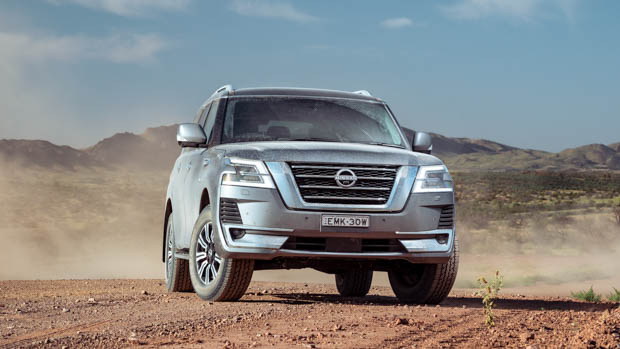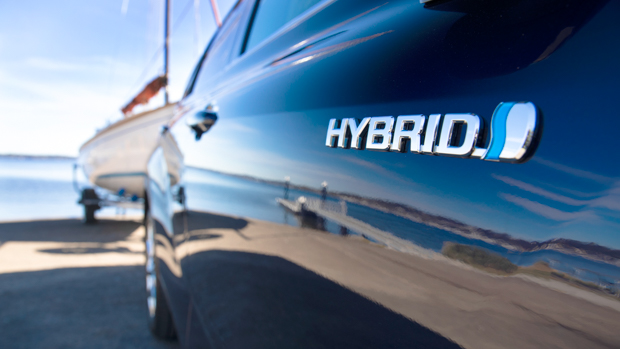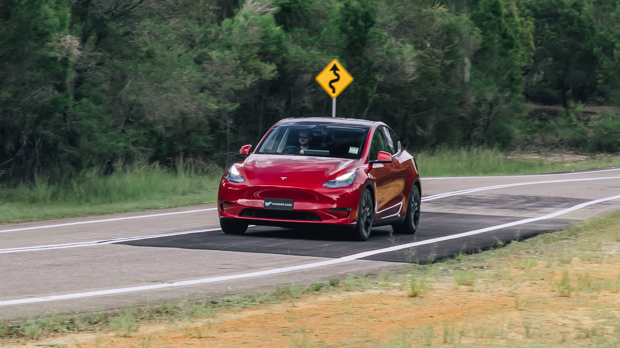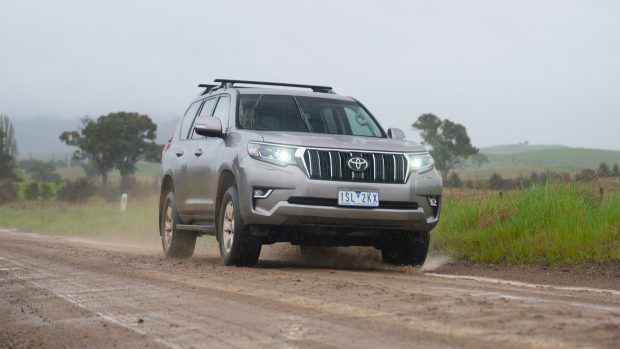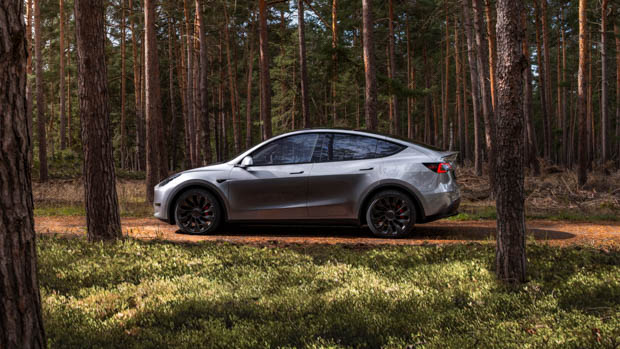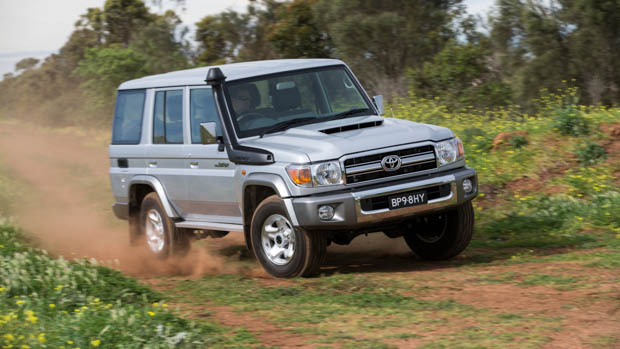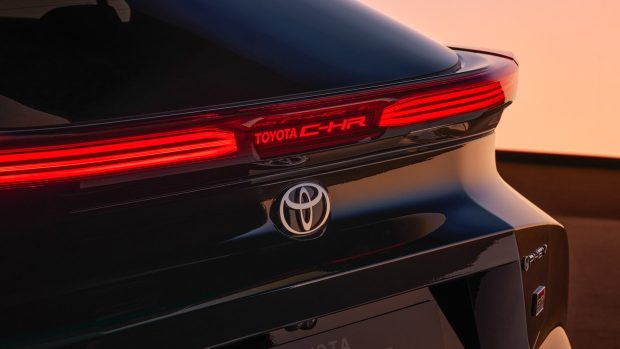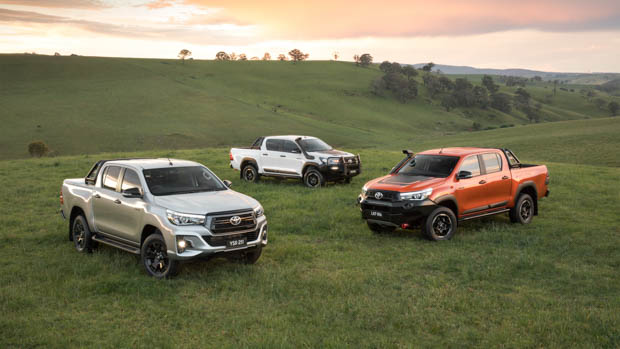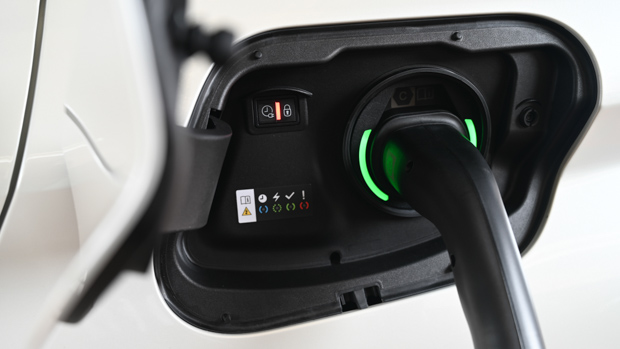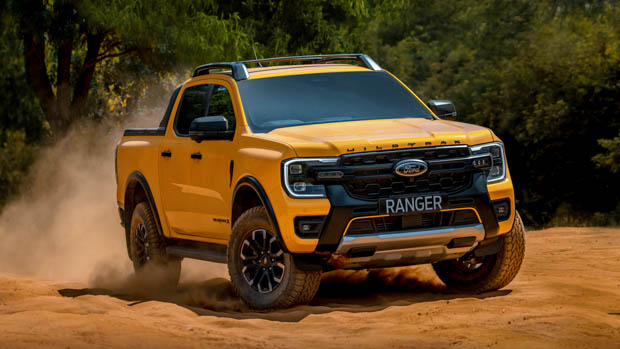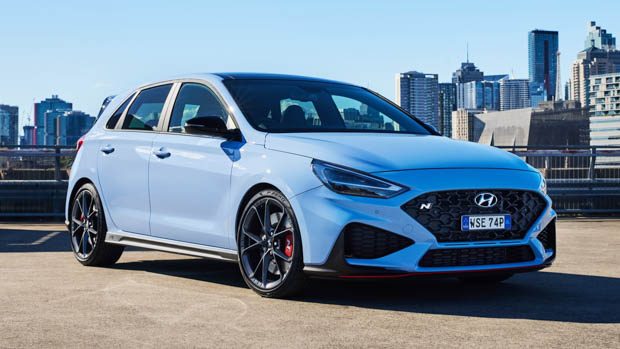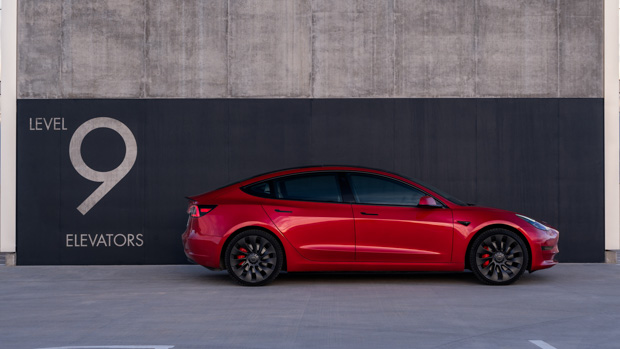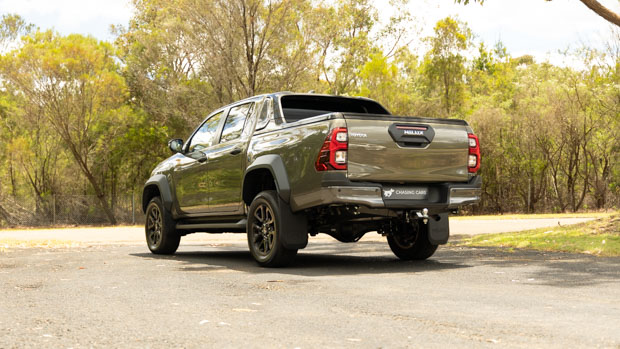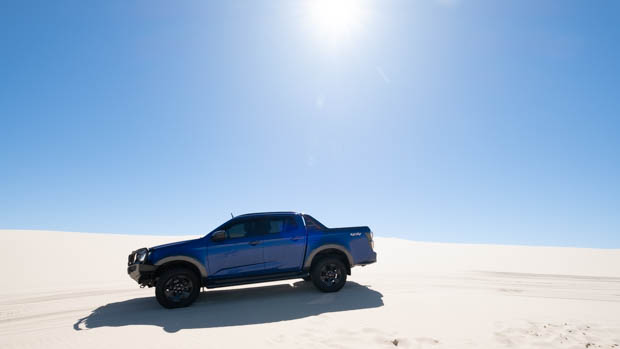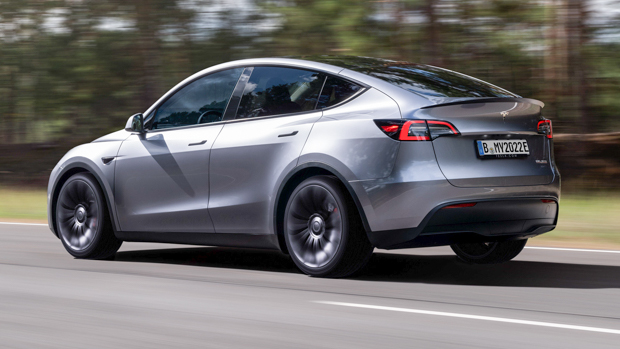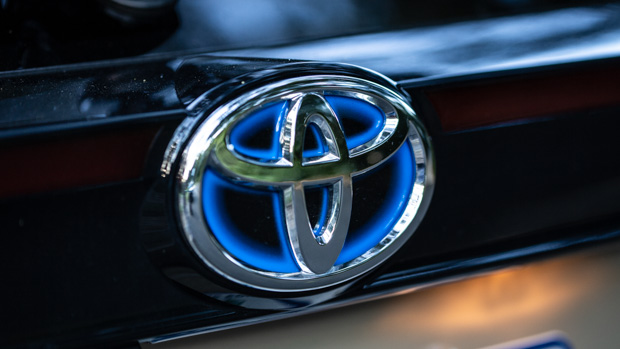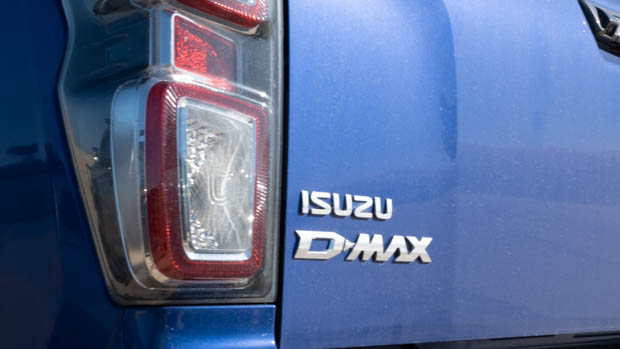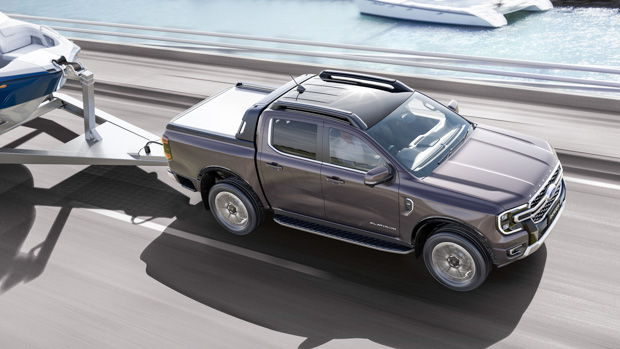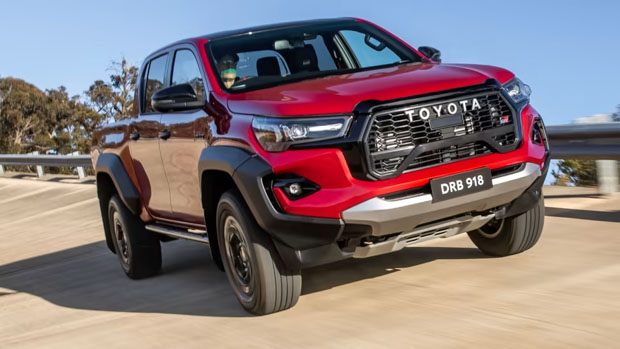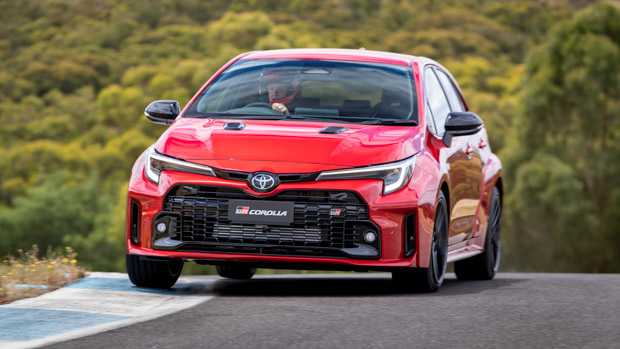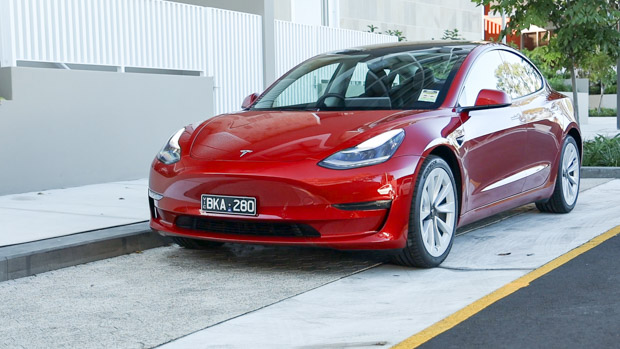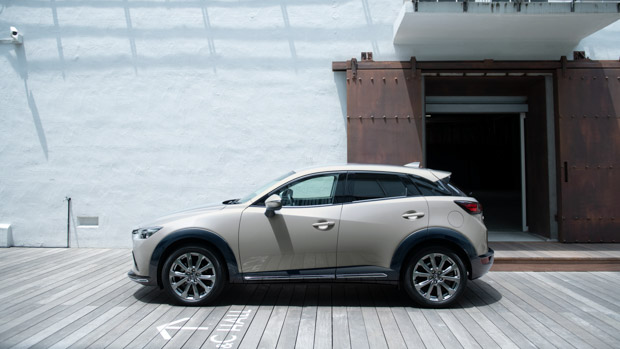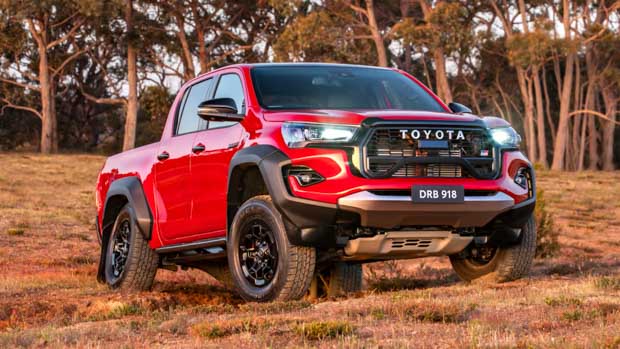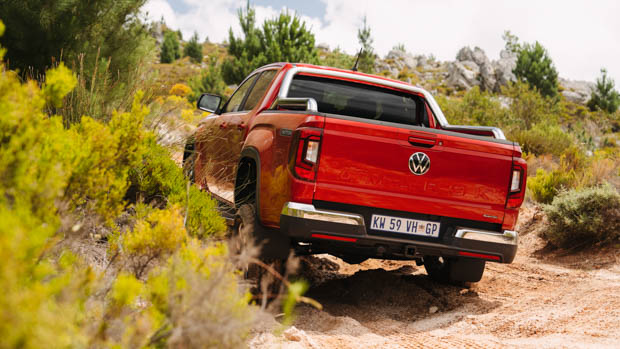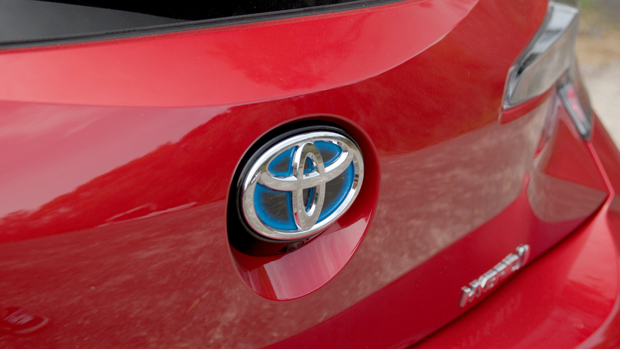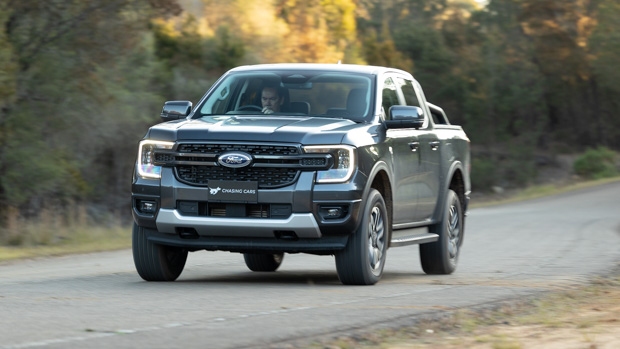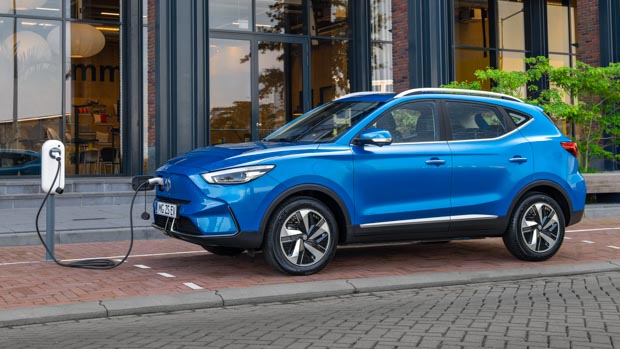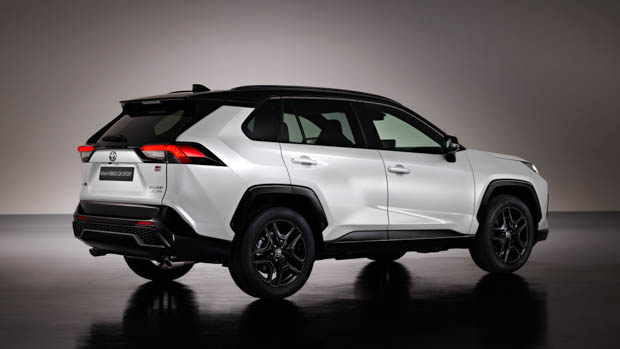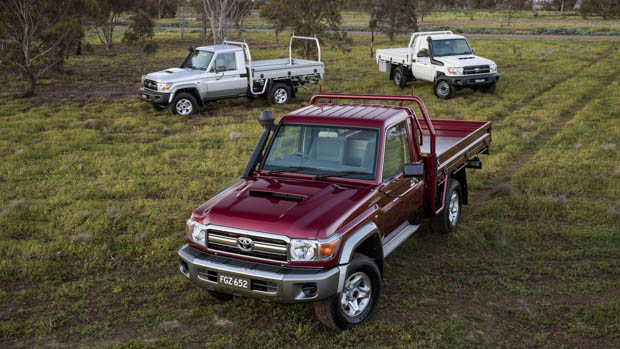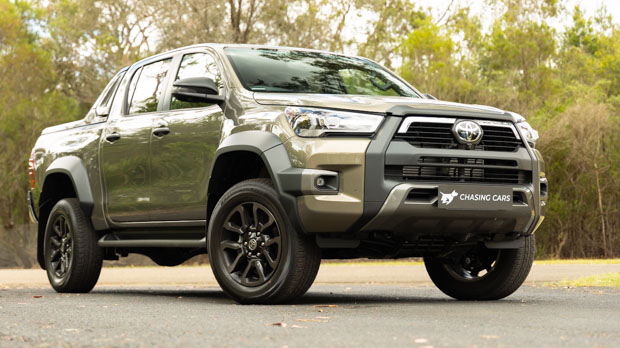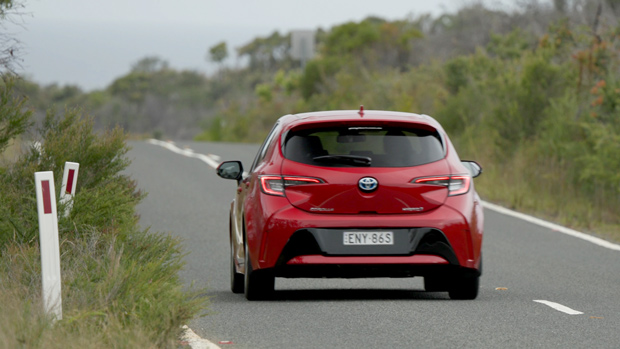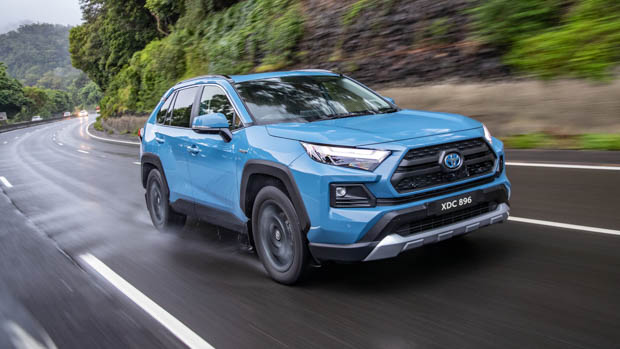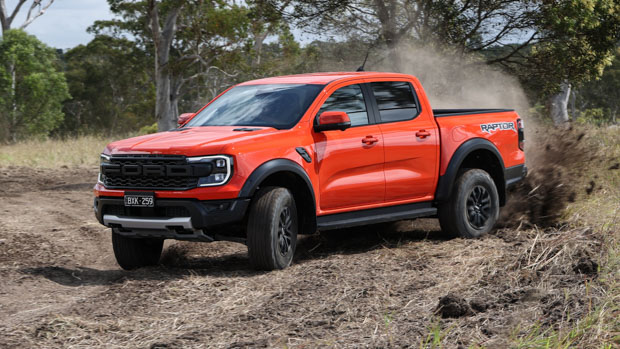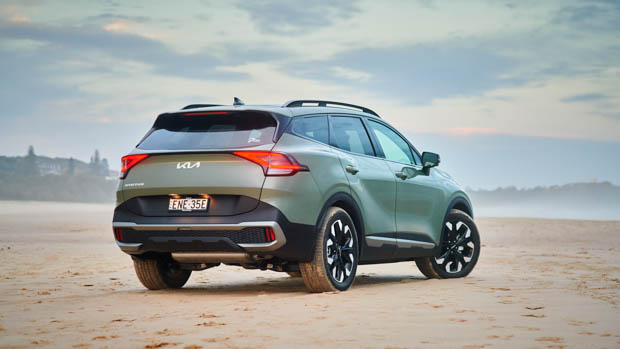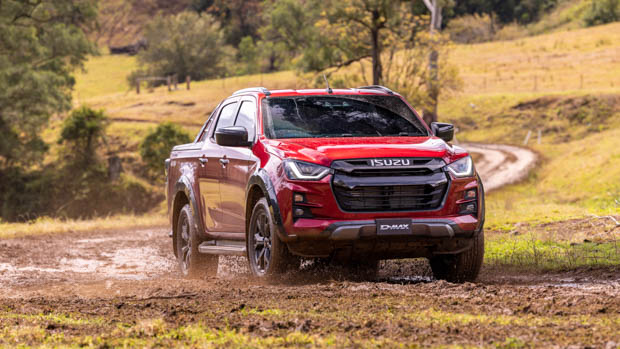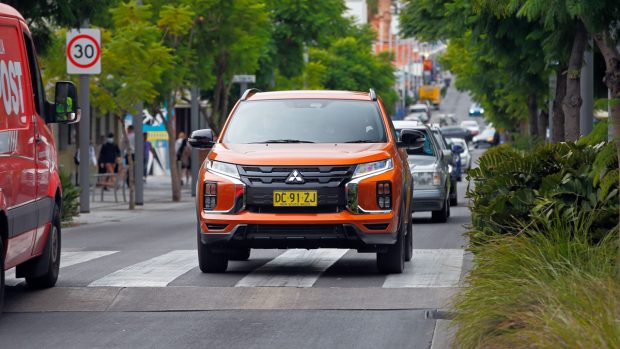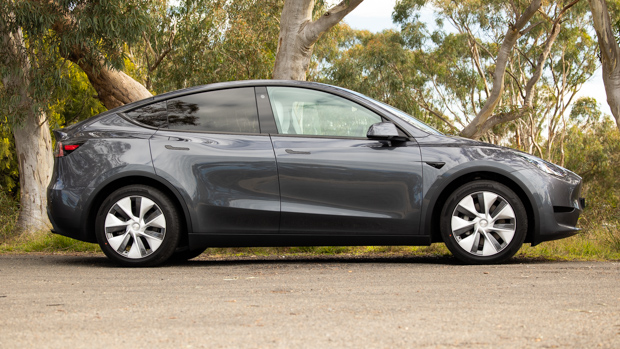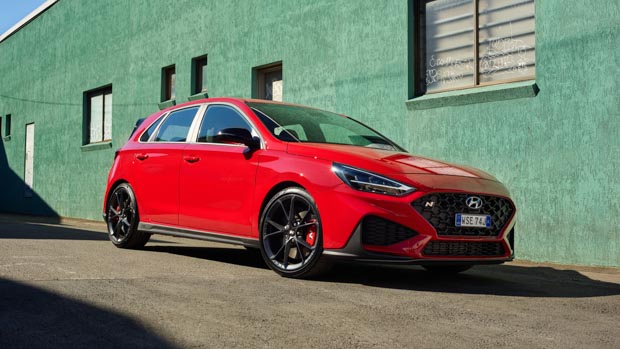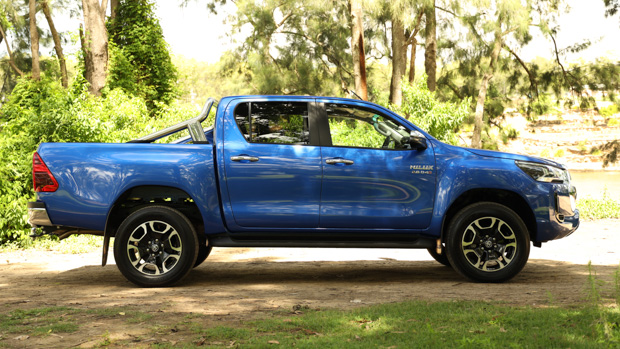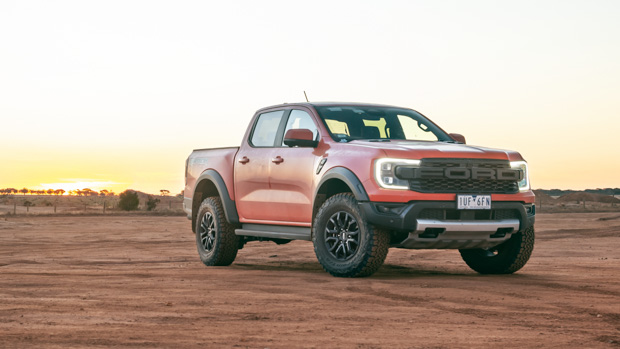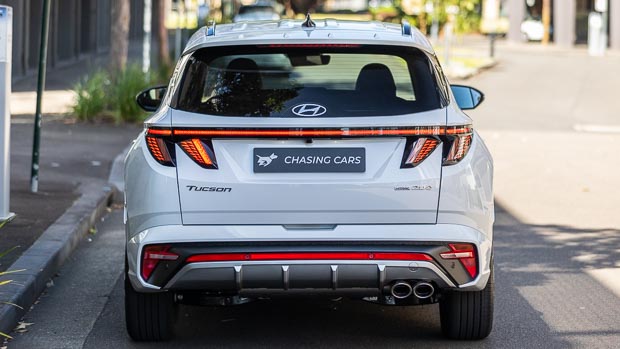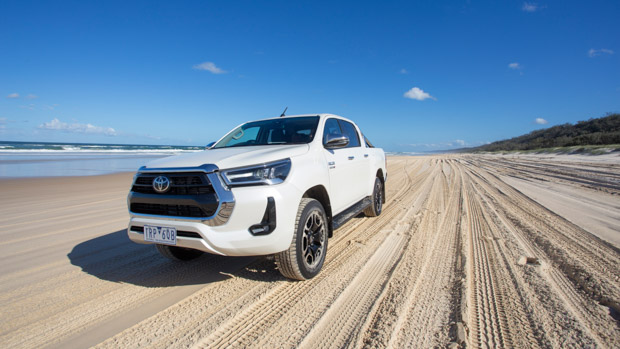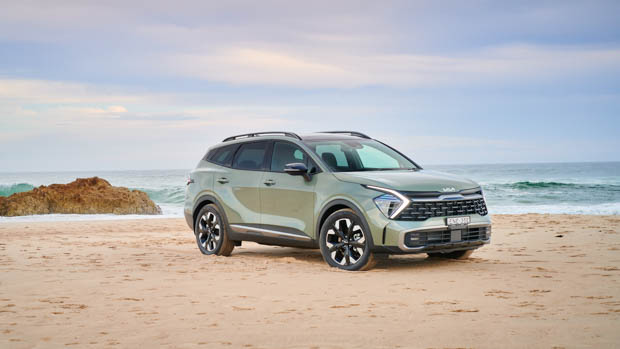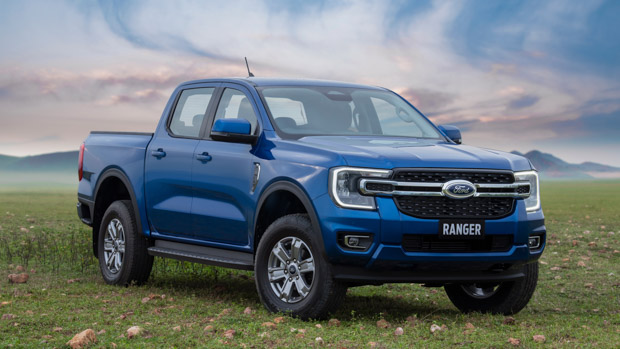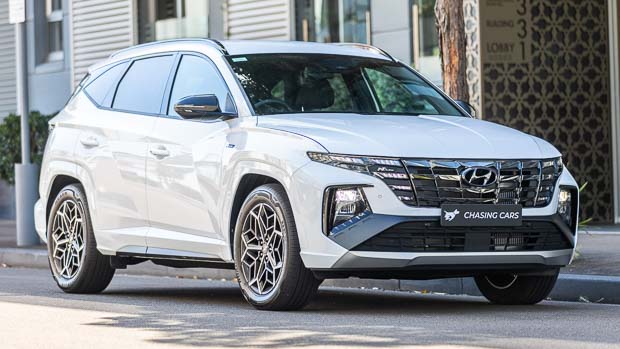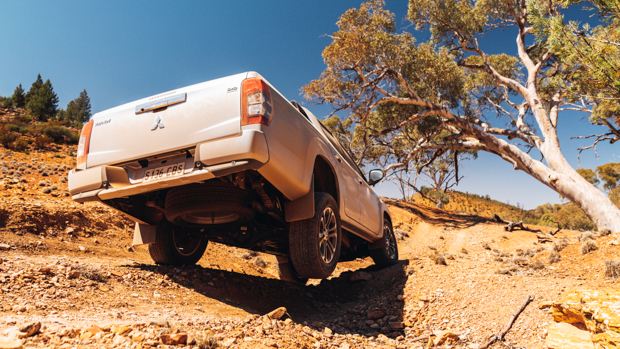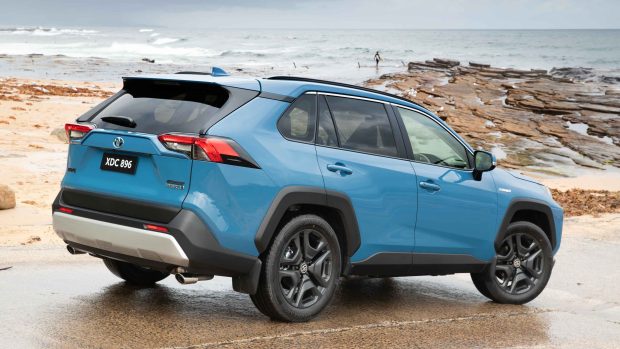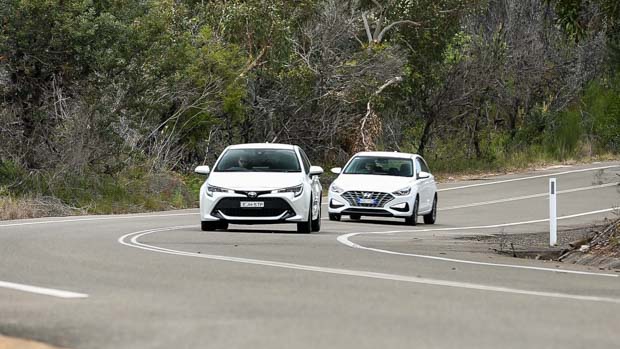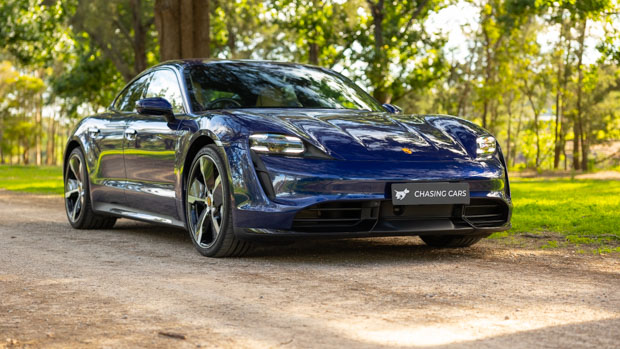-
Car Reviews
- All reviews
- Midsize SUVs
- Small cars
- Utes
- Small SUVs
- Large SUVs
- Large cars
- Sports SUVs
- Sports cars
- Vans
Latest reviews
- Car News
-
Car Comparisons
Latest comparisons
- Chasing Deals
We keep track of the top-selling models in the Australian market each month. See which cars Australians buy in the biggest numbers
Every year, around 1 million people purchase a new car in Australia – but which models of car are the most popular with local buyers? Each month, we report on the top-selling cars, SUVs and utes in Australia, keeping track of which vehicles Australians like the most.
Fleets and small business buyers contribute a huge number of purchases in Australia, but private buyers also dictate many of the models that fall in the top ten each month.
Which cars are competing the most fiercely in 2025? Last year, in 2024, the big winners were the Ford Ranger and Toyota Hilux utes but don’t discount hybrid SUVs like the Toyota RAV4 taking overall honours this year.
A recovery from February’s 10 percent market dip, new car sales set a new record for March with 111,617 sales.
Ford took top honours for the month with the Ranger ute, followed by the Toyota RAV4 medium SUV — though the RAV4 remains ahead year-to-date (13,802 plays 13,226).
Toyota’s evergreen Hilux managed third place and was followed by a strong Mitsubishi Outlander result, the PHEV variant benefiting from a last burst of FBT-exempt sales.
The hot potato Toyota Prado followed in fifth spot, putting that nameplate well on its way to a record sales year of 30,000-plus units. The BYD Shark 6 plug-in hybrid had another huge month.
The Shark was followed by the Ford Everest large SUV, the Isuzu D-Max ute, the MG ZS small SUV and Hyundai Kona small SUV.
In the brands race, Toyota retained its clear first position for the year. Mazda, Ford, Kia, Mitsubishi, and Hyundai were followed by GWM which set record sales in March.
Most popular cars in February 2025
February new-car sales followed in January’s footsteps, dipping 9.6 percent on last year to 94,933 units. Passenger cars and electric vehicles led the slide, while SUVs and utes held steady.
The drop in EV sales goes against what you’d expect in the second month of the federal government’s new vehicle efficiency standards, however batteries aren’t the only answer. As the stats show, hybrids and plug-in hybrids are proving popular taking 21 percent market share.
As ford brands, Toyota still ruled the roost in February with 18,832 sales followed by Mazda (8797) and Kia (6707).
Ford’s third position overall is looking precarious, its 6337 sales in February put it behind Kia for the month; the incoming Tasman ute could put the hurt on Ford. Mitsubishi rounded out the top five in Feb with 6119 sales.
January marked the beginning of the 2025 sales year and set the tone for what’s to come, with weakening results in the back half of the otherwise strong 2024 sales year spilling over into the new year as the overall market cools.
A total of 86,804 sales were registered in January, down 3.3 percent from the previous year, with industry body FCAI pointing to factors such as global and household economic pressures as the reason for the sales slowdown.
Despite an explosion in the availability and choice of EVs, sales were down to 4.4 percent of the market, reflecting the worst results seen since October 2022.
Hybrids, of both the traditional and plug-in kind, fared better, accounting for nearly 20 percent of the market when combined.
After recently being crowned the best-selling car maker globally in 2024, Toyota continued its local dominance by recording 18,424 sales in January, with Mazda (8,322), Ford (6,830), Kia (5,720) and Mitsubishi (5,681) filling out the remaining top five places.
In terms of what sold, greater supply of the well-rounded RAV4 (5076) continues to be a winning formula for the Toyota brand as it took the no.1 spot, despite the midsize SUV being in line to be replaced this year.
The dominant Ranger and Hilux utes came in second and third on the ladder, and while the former was down a notable 10 percent over last year’s results the latter has dropped almost 20 percent as the aging model starts to struggle against newer and better competition.
Toyota’s new-generation Prado (2847) is off to a great start in what the brand predicts will be a record sales year for the 4×4 wagon, while the Outlander (2090) continues to build momentum in the midsize SUV segment.
The Isuzu D-Max (2086) has seen a surprising 17.9 percent drop in sales despite adding the exciting ‘Blade’ to its range late last year.
The soon-to-be-replaced and updated Mazda CX-5 (1872) and Kia Sportage (1826) saw respectable gains of 8.8 and 9.7 percent respectively, while the Ford Everest (1679) experienced a massive spike of 42.8 percent over last year’s January sales.
Rounding out the top 10 was the Mazda CX-3, which recorded 1608 sales, with the historically very popular small SUV showing no signs of slowing in popularity despite being over a decade old.
Most popular cars in December 2024
Month-on-month SUV sales are in the green for the first time in over 5 months – December saw a 10.7% rise over 2023’s figure, with 57,877 SUVs sold. Overall, 95,895 new cars sold this month, only 2.7% lower than last year’s figure.
The ute market is down 22.7% this month, making way for fresh faces to appear in the monthly top 10: The Nissan X-Trail has secured eighth place as Australia’s most popular car, selling 2096 units. The X-Trail has blown away last year’s figure of 940 cars by an incredible 123%!
Replacing the Toyota Landcruiser as a top 10 seller this month, quite unexpectedly, is the GWM / Haval Jolion. The ‘new’ Haval Jolion has been revamped this year as a hybrid, and the reception looks to be overwhelmingly positive. 1691 Jolions sold this December – a 56.1% triumph over the 1083 sales from last year.
The new mild hybrid Toyota Prado continues to remain successful after its release this year. With 2687 Prados finding new homes, the Prado was the fourth most popular car this month.
Most popular cars in November 2024
This November marks another month which falls short of sales figures from last year. 99,091 new-car sales took place, falling short of last year’s figure by 11.6%. Passenger car sales continue to fall compared to last year, decreasing by 26.3%.
Following a trend set by previous months this year, the SUV market continues to improve as the year progresses, only falling short of 2023’s figure by 2.8%.
The MG ZS and Toyota Prado have both secured the title of top 10 best seller this month. The MG ZS sold 2794 units – a sales record for this year. Sales figures of the new Prado are impressive for a car that has only just been released. The new Prado (now offered as a mild hybrid) sold 3590 units.
Mazda’s CX-5 has lost its longstanding position as a top 10 seller this month. Originally launched in March 2017, the second generation CX-5 is starting to show its age, despite a facelift being released in January 2022. Currently, the CX-5 remains as a solid seller, but Mazda are due to announce a third generation.
The newly revamped Hyundai Tucson also lost its place in the top 10 this month. The new Tucson is no longer offered with a diesel but can now be optioned as a hybrid. The success of the new Tucson in Australia will hinge on overall sales figures in the coming months.
Most popular cars in October 2024
98,375 new-vehicle sales finalised this month – a 7.9% decrease on last year. The SUV market is still not as strong as 2023, but the gap is certainly closing, with monthly SUV sales down just 5.2%. The ute market took the largest fall this month, with sales decreasing by 13.7%; furthering last month’s 11.9% decrease by 1.8%.
The new facelifted Tucson has come on sale this month, ditching the option for a diesel engine and instead offering a hybrid variant. Initial reception to the Tucson looks promising for Hyundai, with 1803 unit sales securing 10th place as a monthly best seller. Sales for the Tucson have increased 2.3% over last year’s 1762 vehicles.
The gap in sales between the Ford Ranger and longstanding first place titleholder Toyota RAV4 has closed significantly this month. Less than 100 new vehicle sales separate the Ranger (4757) and RAV4 (4841).
Toyota comfortably remains as Australia’s most popular car brand, leading Ford by a margin of 9890 units.
Most popular cars in September 2024
Following similar trends observed last month, September new-car vehicle sales are down 12.4% compared to last year. A total of 97,020 new vehicles were sold this month. Passenger vehicles and SUVs saw significant decreases, with a decrease of 22.2% and 11.9% respectively.
A good result for the Mazda CX-3 this month, making its way into the top 10 alongside the more popular CX-5. Total sales for the CX-3 this month were 1982 – a 29.5% increase over last year, when the CX-3 was released.
The Toyota Corolla has lost its position as one of Australia’s top 10 vehicles this month. This coincides with the 22.2% decrease in passenger vehicle sales experienced this year. With the Corolla out of contention for this month’s top 10, all vehicles listed are either an SUV or ute, which make up 58.2% and 22.2% of the market respectively.
Most popular cars in August 2024
August new-car sales saw a 10.6% decrease compared to last year, with 98,328 units sold. SUV and ute sales scored the top two seller spots this month. 56,541 SUVs were sold, making up 57.5% of new-car sales. 22,496 utes were sold, making up an additional 22.9% of the market.
Passenger vehicle sales took a heavy blow this month, with the Toyota Corolla being the sole vehicle in its category to place in the top 10. This is despite sales of the Corolla dropping 33.9% compared to last year. Overall The passenger vehicle market is down 21.6%, with a variance of just over 4000 vehicles.
The MG ZS has fallen out of Australia’s top 10 best sellers this month, losing the 10th place position by a whisker to the Toyota Corolla. Last month, the ZS was able to secure 10th with a figure of 1815 units sold – a solid achievement for a relatively fresh face in Australia.
Australians took delivery of 99,486 new vehicles in July 2024, a record high for the month, though a figure that was also under-representative according to the FCAI given that Tesla and Polestar have stopped providing data to the FCAI.
SUVs represented over 50 percent of all new vehicles in July with 56,590 delivered, compared to 21,707 light commercial vehicles and 17,291 regular passenger cars.
In terms of individual models, the Toyota RAV4 midsize SUV delivered its highest ever monthly result (5933) to push the Ford Ranger ute into number two position for the month (4915).
The Toyota Hilux rounded out the podium (4747), ahead of two more Toyotas – the Corolla small car (2688) and the Land Cruiser large SUV (2464).
Utes and SUVs dominated the remaining spots in the top ten, with the Isuzu D-Max (2369), Ford Everest (2162), Mitsubishi Outlander (2110), Mazda CX-5 (2031), and MG ZS (1815) doing good business for their respective brands.
Strong results from across their model lineup ensured Toyota continued dominance from a brand perspective with 22,705 vehicles delivered, ahead of Mazda (8576), Ford (7749), Kia (6620), and Hyundai (6021).
Year to date, Toyota has tallied a mammoth 144,006 sales and 19.7% market share, ahead of Ford (47,371), Mazda (57,023), Kia (47,920) and Mitsubishi (45,352).
Australians took delivery of 119,559 new vehicles in June 2024, down by 4.2 percent on the same month last year but enough to take the year-to-date tally to 632,412 – up 8.7 percent on the same period last year, and also beating the previous record of 605,522 in 2018.
Driving the results once again were strong SUV and light commercial vehicle sales, with the two segments dominating sales charts and accounting for 54.5 percent and 23.3 percent market share respectively.
In terms of nameplates, the Ford Ranger ute was once again Australia’s most popular new vehicle in June, with 6289 rolling into customer driveways, ahead of its archrival Toyota Hilux pickup (5630) and Toyota RAV4 midsize SUV (3907).
A strong month for the Mitsubishi Outlander saw it secure fourth position with 3045 deliveries, ahead of the Tesla Model Y which rounded out the top five on 2906 deliveries, rebounding into the top ten after no BEVs made it into the top ten in May.
In total, BEVs captured eight percent market share in June, down slightly from 8.8 percent last year. However, BEVs have sold 50,219 so far this year compared to 43,092 at the same point last year.
Of the BEV results, FCAI Chief Executive Tony Weber said: “we hope to break the significant milestone of 100,000 EV sales in 2024”.
Outside of BEVs, Hybrid and PHEV vehicles captured a strong 14.4 percent market share in June, a notable increase from 7.8 percent in June 2023.
The most vocal proponent of hybrids, Toyota, was once again number one in June in terms of overall brand results, with 20,903 vehicle deliveries. This was well in front of second-place Ford (9493) which narrowly beat Mazda (9483). Kia (8225) and Mitsubishi (7723) rounded out the top five.
Year-to-date, Toyota has delivered 121,301 vehicles – a remarkable 100,761 of these hybrid – and maintains a commanding lead over Ford (49,622), Mazda (48,547), Kia (41,300) and Mitsubishi (39,634).
Hyundai (36,082), Isuzu (25,903), Nissan (24,916), MG (24,953) and Tesla (23,116) round out the top ten brands in the sales race for the first half of 2024.
Another month, another record set for new vehicle deliveries with 111,099 units rolling into customer driveways in May – an all-time best result for the month.
Year-to-date Australians have taken delivery of 512,753 new vehicles, up over 55,000 on the same period last year (456,833).
Toyota was once again the dominant brand in May with 23,389 deliveries recorded, followed by Ford on 8806, pushing Mazda into third place (8002), followed by Kia (7504) and Hyundai (6495).
Ford’s dominant performance with the Ranger has also seen it maintain its number two position year-to-date with 40,129 vehicles delivered ahead of long-standing second-placed Mazda which has recorded 39,064 across the first five months of the year.
However, both are well behind Toyota’s 100,398 vehicles delivered so far over the same period.
Australia’s most popular vehicle in May was once again the Ford Ranger ute (5912), which was followed by its arch-nemesis, the Toyota Hilux (5702), Toyota RAV4 midsize SUV (5517), Isuzu D-Max (2612) and Toyota Land Cruiser (2578).
The Mitsubishi Outlander midsize SUV followed in sixth position (2500), followed by the only two non-SUV and non-ute vehicles in the top ten, the Toyota Camry midsize sedan (2468) and Toyota Corolla small car (2439).
Rounding out the top ten was the Ford Everest large SUV in ninth position (2110), followed by the Mazda CX-5 midsize SUV in tenth (2108).
Hybrid and plug-in hybrid vehicles saw solid increases, delivering 15.8 percent market share (compared to 7.9 percent last year), with electric vehicles increasing to 8.1 percent market share, compared to 7.7 percent for the same month last year.
New car deliveries in April soared to a best-ever result for the month with 97,202 vehicles rolling into Australian garages, also ensuring a record year-to-date result with 401,654 new vehicles delivered between January and April (up 50,515 on the same time last year).
Once again SUVs dominated the sales charts with a dominant 55.7 percent share of all new vehicle deliveries, ahead of light commercial vehicles (22 percent) and passenger cars (17.8 percent).
Hybrid and plug-in hybrid electric vehicles saw a sizeable increase (18.3 percent market share) which was up from 7.5 percent last year, while full battery electric vehicles were down from a 7.9 percent share last April to 6.4 percent this year.
The strong April results also saw the Toyota RAV4 deliver an upset – taking top spot from the Ford Ranger ute, with the midsize SUV delivering its best ever monthly sales result (5857) as supply continues to improve.
Australia’s favourite car in 2023, the Ford Ranger, came in at number two (5569) and continues to lead the sales charts year-to-date.
The Toyota Hilux ute rounded out the podium (4693), followed by the Ford Everest large SUV (2400) and Isuzu D-Max ute (2380).
It wasn’t just utes and SUVs however, with the Toyota Corolla small car delivering 2097 vehicles to claim sixth position ahead of the Toyota Land Cruiser (1970) and Isuzu MU-X large SUVs (1876).
The Toyota Camry was the only other passenger car to feature in the top ten (1873), ahead of the Mitsubishi Outlander midsize SUV in tenth position (1848).
In terms of brand results, Toyota once again led the sales race in April (20,771), ahead of Ford (8648), Mazda (7301), Kia (6653), and Mitsubishi (5314).
Continued strong performance by Ford thanks to the Ranger and Everest has been enough for the brand to pip perennial number two Mazda into second position on the year-to-date tally, with 31,323 units delivered ahead of Mazda’s 31,062.
However, both are well behind dominant Toyota on 77,009 vehicles delivered year-to-date.
New car deliveries in March soared to a new best-ever monthly record with 109,647 units rolling into Aussie garages, also adding up to a best-ever first-quarter result too (304,452 January – March total).
As usual, SUVs were the dominant segment, accounting for 58.9 percent of new vehicles delivered, compared to 16.1 percent for passenger cars and 21.0 percent for the light commercial segment.
March results also saw the Ford Ranger ute cement its lead as Australia’s favourite car with 5661 units delivered.
In contrast, the Toyota Hilux ute dipped to fourth position (3995), eclipsed by a particularly strong month for the number two ranked Toyota RAV4 midsize SUV (5070) – the first time the midsize SUV has cracked 5000 units – and a strong result for Australia’s top-selling electric, the Tesla Model Y midsize SUV (4379), in third place.
The Mitsubishi Outlander midsize SUV rounded out the top five (2764), followed by the Isuzu D-Max ute (2465).
A string of midsize and large SUVS filled out the top ten, including a strong performance by the Ford Everest (2264), Nissan X-Trail (2161), Toyota Land Cruiser (2159) and Mazda CX-5 (2134).
With 18,961 units delivered, Toyota was yet again the top-selling brand with a dominant 17.3 percent market share.
Ford pipped perennial number two Mazda to become Australia’s second-best selling brand in March thanks to the high selling Ranger and Everest nameplates, with a total of 8776 vehicles delivered ahead of Mazda’s 8246.
Australians took delivery of 105,023 new vehicles in February – another record month for new car deliveries, and 20.9 percent increase on the same month in 2023.
Ford’s Ranger ute maintained a firm number one position with 5353 examples rolling into customer driveways, ahead of its arch-rival Toyota Hilux which delivered 4403.
Tesla’s Model 3 sedan delivered a strong performance (3593) to secure the remaining spot on the podium as Australia’s best selling electric car in March.
Rounding out the top five were the Isuzu D-Max ute (2941) and Toyota RAV4 midsize SUV (2843).
Toyota’s Land Cruiser large SUV (2693), Nissan’s X-Trail midsize SUV (2508) and Toyota’s Corolla small car (2439) followed), with the MG ZS small SUV (2357) and Mitsubishi Outlander (2209) rounding out the top 10.
Australia’s love affair with utes ensured that they accounted for 20.3 percent of vehicle sales in February, while electric cars delivered 9.6 percent of sales.
Passenger cars made up 18.6 percent of all deliveries whilst SUVS accounted for 55 percent.
Unsurprisingly, Toyota delivered an 18.4 percent market share as Australia’s biggest car brand with 19,374 vehicles. This was followed by Mazda (7350) and Ford (7275), with Nissan (6617) and Mitsubishi (6411) rounding out the top five.
The Australian new vehicle sales race has kicked off for 2024 with a record 89,782 deliveries in January, beating the equivalent month last year by 5.8 percent and also the previous January record of 88,551 set in 2018.
As usual, consumer tastes saw SUVs and utes dominate the charts, with the Ford Ranger ute maintaining its number one position with 4747 units delivered, followed by the Toyota Hilux ute (4092).
The venerable Toyota Land Cruiser large SUV (up 55.8 per cent on January 2023) and Isuzu D-Max ute rounded out the podium with an equal 2541 deliveries.
They were followed closely by the Toyota RAV4 (2211) and Mitsubishi Outlander (2077) midsize SUVs, and MG ZS (1888) small SUV, which all posted increased delivery results on January 2023.
While SUVs and utes dominated, the Toyota Corolla (1843) – up 65.1 per cent on January last year – and Hyundai i30 (1727) small cars both made it into the top 10, coming in eighth and tenth respectively.
The two small cars were separated by another Toyota SUV, the outgoing Prado, which delivered 1746 units and came in ninth.
In terms of sales by overall brand, Toyota continued to maintain its dominance with 17,903 deliveries followed by Mazda (8165), which maintained a comfortable number two position despite not having a vehicle in the top 10, and Ford (6624).
Rounding out the top five were Hyundai (6162) and Mitsubishi (5911), which were followed by Kia (5707), MG (4006) and Isuzu (3758). GWM (3124) and Subaru (3068) were ninth and tenth respectively.
Despite being the eighth most popular brand in 2023 and selling Australia’s sixth most popular vehicle in the same year, Tesla didn’t appear in the top 10 brands nor top 10 vehicles in January 2024, with the Model Y electric SUV recording 384 deliveries and Model 3 sedan 723 for a brand total of 1107 units.
Significantly, Chinese automaker BYD delivered 1310 vehicles, beating Tesla for the first time on the monthly sales charts with its three model electric lineup consisting of the Atto 3 small SUV (465), Dolphin hatchback (256) and Seal midsize sedan (589).
However, it’s important to note that Tesla monthly deliveries often fluctuate as a result of delivering vehicles in large batches – the Model Y posted almost the exact same sales figure in January 2023 before going on to secure a position in the top 10 by the end of the year.
The Model 3 – which was down on last January’s 2927 delivery figure – would also likely have been affected by a delivery pause impacting its monthly result.
In terms of the overall low- and zero-emissions market, hybrids, plug-in hybrids and EVs made up a total of 17.4 percent of new car deliveries in January, with EVs making up 5.4 percent of the total January car market.
The continued dominance of petrol-powered utes and SUVs in the January delivery data comes after the federal government published a new impact analysis as it works toward introducing fuel efficiency standards in Australia which would require car companies to supply more fuel efficient vehicles to Australia.
The Ford Ranger ute has claimed the title of Australia’s most popular vehicle after having dethroned a seven-year reign by its rival, the Toyota Hilux, now Australia’s second most popular vehicle.
After a close tussle throughout much of the year, the Ranger registered 63,356 total vehicle deliveries in 2023, over 2000 units more than the Hilux which delivered 61,111 units.
The Isuzu D-Max rounded out the 2023 podium with 31,202 deliveries, ensuring that utes dominated the top three positions.
You can read more about our full 2023 wrap-ups below:
The D-Max was followed closely by Australia’s two most popular SUVs, the Toyota RAV4 (29,627) and MG ZS (29,258) which came in at number four and five respectively, followed closely by Australia’s most popular electric vehicle, the Tesla Model Y which was up a staggering 230% on 2022 and delivered a total of 28,769 units.
In terms of overall brand results, and despite being down seven percent on 2022, Toyota maintained its dominance over the Australian new car market with 215,240 deliveries.
Toyota was followed by Mazda in number two (100,008), with Ford rounding out the podium on 87,800 deliveries.
The Ford Ranger was once again king of the Australian new car sales charts, selling a sizable 6303 units during November 2023 – a 24 percent difference from this time last year.
Following behind was the Toyota Hilux with 5901 units shifted into Australian homes. In third place was the Isuzu D-Max that sold 3692 units in November, a 133 percent increase from November 2022.
The Tesla Model Y was not far behind the top three, with 3151 units shifted during November. But Tesla’s midsize electric SUV couldn’t manage to get close to its huge June 2023 figure of 5560 units.
Much like the rest of 2023, Toyota remained a dominant sales figure and has sold a grand total of 195,959 cars in Australia so far in 2023.
Toyota had four cars in the top ten leaderboard during November, including the Hilux ute, Land Cruiser Prado SUV, RAV4 midsize SUV and the Toyota Land Cruiser SUV.
Electric vehicles are also on the rise, with 80,446 BEV sales so far in 2023, a sizable increase from the 28,326 BEVs sold during the same time period in 2022.
The Australian new car sales market is set to break an all-time record in 2023 with more sales than ever before.
Utes continue to be number one in Australia, as one million new cars have now been sold in Australia so far in 2023.
It was the Ford Ranger (6215) that took the top spot on the leaderboard, followed by its ever-popular rival, the Toyota Hilux (5766), with the Isuzu D-Max (3198) in third place.
Rounding out the top ten was a group of both midsize and large-sized SUVs, including the Mazda CX-5 (2509), the Mitsubishi Outlander (2238) and the Ford Everest (1803).
But it was Toyota with the most cars in the top ten sales charts, with four of its models all selling over 2300 units in October, including the aforementioned Hilux, the RAV4 midsize SUV, the Land Cruiser off-road focused SUV and the Prado large SUV.
Interestingly, the Tesla Model Y midsize SUV, which in September sold the third most number of vehicles, dropped to just 810 units sold during the month of October in Australia.
This could be due to the supply situation or shipments of the model, but it’s interesting to see Tesla not retain its placing in the top ten chart for October.
Toyota remains to be the highest-selling manufacturer in Australia, with a total of 20,298 sales alone during October.
Toyota has sold a total of 174,957 vehicles in Australia so far in 2023, with the next-biggest-selling brand being Mazda with 84,536 units sold to date this year.
The Toyota Hilux ute was once again Australia’s best-selling vehicle in September, topping off a record month of new vehicle sales with deliveries up 18.3% on the same month last year.
Not surprisingly, the Hilux was followed by its sparring partner, the Ford Ranger ute – both vehicles delivered strong results (5776 and 5429 respectively), with the Hilux currently leading the year-to-date tally on 44,301. This was followed closely by the Ranger with 43,073.
In contrast to the popular utes, the Tesla Model Y electric SUV rounded out the podium in third place with 3811 units shifted in September. This is up from 2314 in August and 3330 in July, but down on June’s massive 5560.
The Model Y continues to dominate the electric vehicle market in Australia. Next best electric performers included the Tesla Model 3 sedan (1366) and the BYD Atto 3 SUV (702). In total, EVs delivered eight percent of the total market share in September.
The Isuzu D-Max continued its strong performance to come in fourth with 2885 units sold, down from 3281 last month (its best month of 2023 to date).
A trio of SUVs followed with the Toyota RAV4 midsize SUV (2798), Mitsubishi Outlander midsize SUV (2612) and MG ZS small SUV (2528) all performing well.
The only non-SUV and non-ute to make the top 10 – the venerable Toyota Corolla small car – came in eighth with 2217 units, followed by the Kia Sportage midsize SUV (2031) and Ford Everest large SUV (1984) rounding out the top ten.
As usual, Toyota dominated the overall sales charts from a brand perspective with 20,912 sales.
Despite not having a single vehicle in the top ten in September, Mazda continues to hold its position as Australia’s number two brand (8031), just nudging in front of Ford (8015) and Korean siblings Kia (7303) and Hyundai (6217).
Other interesting results in September included the Nissan Patrol large SUV that delivered its strongest monthly result for the Y62 with 1208 vehicles sold, building on an already strong 1032 V8 Patrols last month – this was again timely given our recent report on the likely demise of the bent-eight.
In the premium brand space, BMW beat Mercedes-Benz in September – 2354 versus 1702 – and now edging ahead year-to-date (19,040 versus 18,490) for the first time in over a decade.
The Toyota Hilux/Ford Ranger battle for nation’s best-selling vehicle could barely have been closer in August, with just two sales the difference between these heavy-hitting utes.
After the Ranger snared top spot in July, it was the Hilux reclaiming honours in August with 5762 sales versus Ford’s 5760.
It was another ute, Isuzu’s D-Max, registering arguably the most eye-catching monthly numbers. With 3281 sales it enjoyed its best month of 2023 so far, knocking the MG ZS small SUV down to fifth (3193 sales).
Rounding out the podium was Toyota’s ever in-demand RAV4 midsize SUV (3317 sales), while our best-selling brand also filled sixth and seventh spots with its Land Cruiser (2743) and Corolla small car (2717).
Tesla’s Model Y midsize SUV had a relatively subdued month, registering 2314 sales for eighth place. This is down from July’s 3330 sales, June’s massive 5560 and May’s 3178.
Even so, it remained runaway best-selling EV in the land, with its stablemate Model 3 sedan next up with 995 sales, then BYD’s Atto 3 small SUV with 803.
In ninth place was Hyundai’s only entry, the Tucson midsize SUV selling 2084. In tenth was Mitsubishi’s Outlander midsize SUV, also breaking 2000 sales with 2030.
In good news for the industry, customers took delivery of 109,966 new vehicles – the highest August result on record.
Electric vehicles (6984 sold) accounted for 6.4 per cent of the market, and hybrids (11,584) 10.5 per cent – mainly all Toyota badged.
Best-selling marque was (as ever) Toyota with 22,321 sales, for a 20.3 per cent market share. For the year to date its share is 17 per cent, with 133,747 cars sold.
Mazda was August’s second-best selling brand with 8458 units shifted (despite no individual models in the top ten), followed by Ford (7898), Hyundai (6513), Kia (6510), MG (5368), Mitsubishi (4961), Isuzu (4712), Subaru (4706) and Nissan (4233).
Nissan in tenth place is a welcome return to form for the brand, on the back of support for its new generation X-Trail midsize SUV (1533 sales) and Qashqai small SUV (512).
The Japanese brand also shifted an impressive 1032 V8 Patrols – timely, with our recent story on the likely demise of the bent-eight to be replaced with a V6 for the next generation.
Toyota might not have the number one spot this month – that goes to the Ford Ranger ute – but the Japanese automaker has managed to push five of its models into the top ten sales leaderboard for July 2023.
The Hilux ute (2nd), RAV4 midsize SUV (5th), Corolla small car (6th), Land Cruiser four-wheel drive (7th) and the Toyota Prado (10th) all made the list this month.
However, the Ford Ranger powered past the Hilux with 5143 registrations, compared to the 4670 registrations of the Toyota model over the same time period.
The MG ZS lifted from fourth to third spot on the ladder with an impressive 3852 units shifted, closely followed by the all-electric Tesla Model Y with 3330 units in July.
The Isuzu D-Max ute has risen up to eighth position with 2070 units shifted, but it couldn’t beat its June sales figure of 2500.
The Toyota Prado has rejoined the top ten leaderboard for July 2023 with a significant 1836 units over the past month – a new generation will launch in mid-2024.
Toyota continues its reign as the best-selling automaker in Australia, moving 19,191 vehicles during July. Mazda followed with 8307 units shifted, then Ford with 7109 and finally Hyundai with 6521.
According to VFACTS, battery-electric vehicles accounted for seven percent of all new car registrations during July 2023. A total of 17.9 percent overall comprised battery electric, hybrid or plug-in hybrid vehicles.
The news is in: there has been a big upset in the Australia sales charts in June 2023 with the Tesla Model Y midsize SUV unseating the Ford Ranger ute to become the second biggest-selling vehicle in Australia in June, shifting 5560 units of its midsize electric car.
The Toyota Hilux remains in top-spot with an impressive 6142 sales during the same period. Ford managed to sell 5334 units of its popular Ranger ute.
On the topic of Toyota, the Japanese automaker had three models in the top ten for June, including the RAV4 midsize SUV (2858 units) in fifth place and the Land Cruiser SUV (2724 units) in sixth place.
Of all vehicles in the top 10 VFACTS leaderboard, four of the models were utes and five were SUVs.
The Isuzu D-Max ute, now sitting in tenth position, dropped significantly from sixth position last month, while the Mitsubishi Outlander midsize SUV was pushed out of the top ten completely.
The Hyundai i30 small car maintained the same position as May, sitting in eighth position with 2523 units shifted.
In June 2023, 124,926 units were delivered to customers here in Australia.
Post-COVID life is booming yet again and is showing in the numbers, with a 25 percent increase in sales from this time last year. VFACTS says it is the highest June result since 2018.
EV and hybrid vehicles continue to succeed, with 16.6 percent of all new cars sold in June being battery electric, hybrid or plug-in hybrid models.
So far in 2023, Toyota remains the market leader and has sold the most cars, with a total volume of 92,235 units. Toyota’s market share has dropped to 15.9 percent when compared to the 22.6 percent total share it had in June 2022.
Following behind is Mazda with 50,424 units and Kia with 39,160 units.
It was a great month of May for new car sales, with 105,694 vehicle registrations over the month, a 12 percent increase over May 2022 figures.
In terms of individual models, Toyota took back the reins with its Hilux as the best-selling vehicle in Australia during the month of May, with 5772 units shifted into Aussie homes and workplaces.
The Ford Ranger fell some way behind the Hilux in second place with 4110 units sold, however this was an improvement over April’s 3567 units sold.
The Tesla Model Y is taking the local EV market by storm, sitting in third place with a total of 3178 units sold.
Toyota managed to have three vehicles in the top ten, including the RAV4 SUV (2616) and the Toyota Land Cruiser (2303).
Both the Hyundai i30 hatch and the Hyundai Tucson midsize SUV continue to impress in the sales charts with two top 10 appearances in eighth and ninth place respectively.
The Isuzu D-Max ute shifted up one place when compared to April figures, selling a total of 2371 units.
As of May 2023, battery electric vehicles account for 7.7 percent of the Australian new car market, while all electrified models – meaning hybrids, plug-in hybrids, etcetera – held 15.6 percent of the market in May.
Back in May 2022, there were 925 fully electric cars sold, while in May 2023, there was a significant increase, with 8124 battery-electric units sold.
There was a slight increase in the volume of plug-in hybrids sold, with 695 units sold in May 2022 versus 791 units sold in May 2023.
The month of April continued an eyebrow-raising trend in the market: the Australian-developed Ford Ranger ute is still the overall sales winner and most popular vehicle in Australia so far in 2023.
It seems there is no stopping Ford’s new-gen ute from overtaking Toyota’s beloved but aging Hilux, with the pair reporting 3567 and 3526 sales respectively. It’s a thin margin for the Ranger, but a win is a win.
Earning a second place isn’t likely to cause a major headache for Toyota given it has a slew of Hilux updates on the way – and it also pinched third, with the RAV4 midsize SUV (2198) returning to the bronze position on the ladder. The RAV4 with its popular hybrid option is looking likely to remain Australia’s favourite SUV this year.
Despite being a newcomer to the market, the Tesla Model Y (2095) is still facing huge demand taking fourth place, while the closely-related Model 3 EV sedan (1581) took 10th position.
In a win for passenger cars, Hyundai’s i30 (2029) came in fifth, even after the Korean car manufacturer was forced to pause orders on hot N models in hatch guise.
Taking sixth position, was the Mitsubishi’s Outlander midsize SUV (1829) followed by the Isuzu D-Max ute (1809) and another midsizer in the form of the Hyundai Tucson.
Keen pricing of its fully electric variant, and a plethora of government rebates, has helped the MG ZS take ninth (1588) and, as previously mentioned, the Model 3 rounded out the top ten.
A total of 82,137 cars were purchased in April showing a growth of 1.1 percent over this time last year, bolstering the year-to-date tally to 351,139 – which itself is 2.2 percent up over the 2022 results.
The tastes of Australian buyers appear to be moving consistently towards electric vehicles, which made up eight percent of overall sales – up 1.1 percent compared with April last year.
When looking at all ‘electrified’ vehicles (meaning hybrids are included) that number grows to 15.4 percent (up from 9.5 percent).
This is reflected in the top ten, with half of the list made up of vehicles that offer particularly or fully electrified drivetrains.
When looking specifically at car makers, Toyota recorded 12,029 sales and was the overall winner, followed by Mazda (6926), Kia (6200), Hyundai (5732) and Ford (5047).
March has well and truly flown past us and at the top of Australia’s new car sales leaderboard, things look very familiar.
The Toyota Hilux (4583) beat the Ford Ranger (4508) and landed the title of the best-selling new car in Australia for the first time in 2023.
Isuzu had a great month, with both its D-Max ute (third, 2789 units) and MU-X SUV (10th, 1745 units) products both landing in the top ten leaderboard.
The duo pushed out cars such as the Toyota Land Cruiser off-roader and Tesla Model 3 sedan out of the top ten leaderboard for March. The D-Max ute climbed to third place from eighth place last month.
Other highlights include a strong performance from the Tesla Model Y midsize SUV (1938 units) and the Mitsubishi Outlander midsize SUV remaining one of Australia’s best selling new cars with 2169 registrations.
The Toyota RAV4 saw a drop from sixth to ninth place, in this month selling 1778 units, however it’s often seen that a lull like this from Toyota is only temporary.
The Subaru Forester SUV (1881), MG ZS SUV (1884) and Toyota RAV4 SUV (1774) all held on to remain in the top ten sales for March 2023.
Toyota remains the dominant force in Australia for new car sales with 40,918 vehicles registered in the year so far.
Toyota is followed, but by some margin by Mazda and Ford with 25,317 and 19,131 registrations respectively.
Tesla has pushed itself into the top ten car manufacturers and is currently sitting in ninth place with 10,407 sales so far in 2023. Tesla has sold more cars than Isuzu so far this year.
VFACTS also reported that sales for battery-electric vehicles grew by 19.5 percent compared to March 2022 figures, while plug-in hybrids grew by 33.3 percent over the same period of time.
The three best selling vehicles for March were utes and there were no passenger sedans in the top ten leaderboard, showing Australian preference towards SUVs and utility vehicles.
The short month of February has quickly been and gone, but in that time, 86,878 new vehicles were registered across the country.
That figure is slightly up from what was achieved during February 2022 (85,340). 47,888 of vehicles sold during February 2023 were SUVs – the most popular vehicle segment.
The month of February looks very similar to January when we look at the vehicle sales leaderboard, with the Ford Ranger (4473), Toyota Hilux (3939) and Tesla Model 3 (2671) all retaining their positions from January as the top three best selling cars in Australia.
Those three vehicles were followed by the Mazda CX-5 (2600), Mitsubishi Outlander (2166) and Toyota RAV4 (2115).
Rounding out the pack was the MG ZS (2045), Isuzu D-Max (1931), Toyota Land Cruiser (1783) and Subaru Forester (1709).
Of the top ten models, three were Toyotas, however its Corolla small car has dropped out of the top 10 charts.
In terms of which companies are selling the most cars in Australia, Toyota is the king here, selling 27,695 cars so far in 2023. The Japanese brand currently has a 16 percent share of sales locally.
Behind Toyota by quite some margin was Mazda (17,074), followed by Ford (12,646) and Kia (12,006).
January marks the beginning of a new year and, importantly for car manufacturers, a new opportunity to offer the best-selling car or perhaps even become the best-selling brand in Australia.
Last year the winner on both fronts was Toyota; with its Hilux ute taking the crown as the best-selling overall vehicle but after years of living in its shadow, Ford is eyeing that position with its new-generation Ranger.
It’s still early days but the Ranger pulled ahead of the Hilux this month, recording 4749 and 4131 sales respectively.
A surprise third place goes to the Tesla Model 3 (2927), which is an impressive achievement but primarily due to the inconsistent flow of Tesla cars into Australia. We’ve written a separate article to break down these results.
It might be getting on in years but the Mazda CX-3 (2417) is still one of the most popular options in the small SUV segment, with its big brother the CX-5 midsize SUV (2189) coming in fifth overall.
Toyota’s RAV4 (1958) took sixth place following its seller performance last year when it became Australia’s best-selling SUV.
A regular of the top ten, the Isuzu D-Max ute (1843) took seventh place, followed by the MG ZS (1842), which has gained considerable popularity with its affordable electric variant.
The Mitsubishi Outlander (1674) saw a boost in sales over same time last year as did the Toyota Land Cruiser, which includes both 70 Series and 300 Series volume.
As far as overall results, Toyota is so far the most popular brand accounting for 15.7 percent of sales though that’s down on this time last year when it made up 20 percent.
Second was Mazda (11.1 percent), Ford third (7.8 per cent), Kia fourth (7.1 percent) and Hyundai fifth (6.8 percent). The Aussie love affair with MG continues: the Chinese brand was in seventh place with 4.7 percent market share.
As usual, SUVs (46,698) and light commercial vehicles (18,546) made up the majority of sales: 77 percent of the total were from these two segments alone.
The year that was 2022 has come to an end and it was Toyota at the top of the sales ladder with a whopping 231,050 units shifted in 2022. In second place and a long way behind was Mazda with 95,718 sales.
In terms of individual model sales for December 2022, the Ford Ranger was able to unseat the Toyota Hilux from its crowning spot, selling 4663 units for the month.
However, the Hilux wasn’t far behind, selling an impressive 4271 units of its popular utility vehicle.
With 2022 now all wrapped up, the Toyota Hilux has become the best-selling model in Australia, moving a significant 64,391 utes over the span of 12 months. Ford, in comparison, sold 47,479 units of its Ranger ute in the same period, nabbing second place.
For the year, Toyota managed to take four of the top ten seller positions in the charts, yet again cementing the brand’s popularity on Australian shores.
The MG ZS was able to bump the Toyota Corolla off its perch for third place, selling 3056 units during the December period. The Corolla fell massively to eighth place in the charts, selling just 1843 units.
The Toyota Land Cruiser and RAV4 nabbed fourth and fifth positions, selling 2482 and 2193 units respectively. Both vehicles are proving to be very popular with Australian buyers thanks to proven reliability, space for families and fuel efficient engines.
Of all vehicle segments, it was SUVs that were the most popular. 574,632 SUVs were sold during the year of 2022, making up 53.1 percent of the total Australian new car market.
Since 2010, there has been a rapid decline in passenger vehicles and a significant burst of energy from SUVs according to the Federal Chamber of Automotive Industries.
A grand total of 1,081,429 vehicles were sold in Australia in the 12 months of 2022, an increase of 31,598 cars over 2021’s 1,049,831 figure.
Toyota was the winner here, selling 231,050 cars up to and including December. Next was Mazda with a much lower sales figure – 95,718 units over 12 months.
Next followed Kia, Mitsubishi and Ford, while at the other end of the leaderboard, Isuzu and Volkswagen found themselves at nine and tenth on the ladder. However, both automakers still managed to sell a solid chunk of vehicles, with Isuzu moving 35,323 units and Volkswagen 30,946 units.
The mighty Toyota Hilux ute has taken the top sales spot back from its closest rival, the Ford Ranger, in November 2022, shifting 5440 units over the past month.
The Ranger still managed an impressive 5073 units, but it could not keep up with its fiercest competitor in the extremely popular dual-cab ute segment here in Australia.
It follows the launch of the popular top-spec Rogue variant of the HIlux, which surprised pundits by making significant modifications to the suspension and brakes.
Toyota’s popular Corolla small car found its place in third position with 3732 unit sales and was followed by the MG ZS small SUV.
The Toyota Land Cruiser saw a boost in sales with 2296 units sold – up from 1767 registered in October 2022. This is due to increased demand for new 300 Series Land Cruisers, a popular model for families in Australia.
A total of 13,415 full EV and hybrid vehicles were sold in November 2022 – an area that continues to grow month on month. A total of 108,507 electrified cars have been sold during 2022 so far.
SUVs continue to be a popular choice with Australian buyers and are up by 12,662 sales when compared to this time last year. SUVs are the biggest segment in the new car market, making up 52 percent of the entire market.
In December, there will have been one million vehicles sold in Australia during 2022.
Toyota continues its dominance in the new car market, selling 20,107 vehicles in November alone, more than double the amount of cars sold by the next biggest automaker, Mazda, that sold 7,549 units in the same month.
In the year of 2022 so far, Toyota has sold 214,776 vehicles, around 7000 more than what it accomplished in 2021.
Mazda was followed by Kia, Mitsubishi and Hyundai in the total sales charts for November 2022.
After four months on sale, the slow trickle of Ford Ranger supply has gained considerable momentum with the new-generation ute officially overtaking the Toyota Hilux, at 5628 sales compared to 4884 for its compatriot.
It’s not the first time the pair have traded places on a monthly basis, but it remains to be seen if the new-generation Ranger armed with updated safety and cabin tech – as well as that grunty new V6 – has what it takes to outmuscle the Toyota in the showroom in yearly sales, which has held the crown as Australia’s best-selling vehicle for six years in a row.
The battle for the top spot is reflective of Australian buyer habits as a whole, with light commercial vehicles and SUVs making up 80.1 percent of overall sales.
The monopolisation of high-riding transport left just 15.3 percent remaining for passenger vehicles, which once dominated the market, and 4.7 percent for heavy commercial vehicles.
A total of 87,299 vehicles were sold in October according to the Federal Chamber of Automotive Industries, reflecting an increase of 12,649 additional sales when compared to the same time last year.
Year-to-date results in October saw the industry collect 898,429 sales, beating out its 2021 figure by 0.9 percent.
When looking at the market on a per-vehicle basis, a large batch of vehicles saw the Toyota RAV4 midsize SUV return to its place as the most popular SUV in Australia with 3222 sales, as wait lists of 12 months or more persist for local buyers.
The Mazda CX-5 found itself in fourth place again this month with 2352 sales, with the MG ZS small SUV keeping close company at 2293 vehicles sold.
At sixth place, the Isuzu D-Max recorded 1951 sales with yet another consistent result in the top ten as the Kia Sportage became the third-most popular midsize SUV with 1877 sales.
Sharp pricing and increasing popularity saw the MG 3 become Australia’s most popular small car in October, beating out the likes of the Hyundai i30 and Toyota Corolla that both failed to make the top ten.
Toyota appears to be getting back on top of LandCruiser supply with 1767 units shipped to customers this month, with the Mitsubishi ASX (1734) renewing its popularity as a value-driven option in the small SUV space despite its 13-year vintage.
Toyota widened its margin over its competitors in October, selling a total of 194,669 cars so far this year with Mazda showing a strong, but still distant, second place with 79,669 sales.
Kia jumped two places over Mitsubishi (66,505) and sister brand Hyundai (63,392) with 66,580 sales, as the trio tussled for third place.
A changeover in generation for Ford’s best-selling vehicles, the Ranger ute and Everest 4WD, has seen the Blue Oval record a 12 percent drop with 53,298 cars sold. Chinese brand MG nabbed seventh place with 38,891 sales.
Isuzu retained its eighth-place ranking 30,020 in a near-identical result to its efforts at the same time in 2021, followed by Subaru (28,264) and Volkswagen (24,842).
The month of September was a key marker of success for fully electric vehicles, which are quickly gaining momentum in Australia with the recent arrival of more affordable offerings including the Tesla Model Y midsize SUV and BYD Atto 3 small SUV.
VFacts reports that 7247 battery electric vehicles were sold – eclipsing the total sales of hybrid and plug-in hybrid vehicles at 5141 – contributing to almost half of the 21,771 EVs sold this year.
Despite this, the Toyota Hilux continues its reign as the best-selling vehicle in Australia with 5170 units sold followed by the Ford Ranger at 4890. The Model Y did come close with 4359 sales though this is likely assisted by the batch-delivery style of its maker, Tesla, coupled with the highly anticipated nature of this globally popular SUV.
The podium positioning also saw the Model Y branded as the most popular midsize SUV on sale, leaving rivals such as the Mazda CX-5 (2439) in fourth place, while others such as the Mitsubishi Outlander (1879), Toyota RAV4 (1856) and Kia Sportage (1775) took seventh to ninth place respectively.
The Outlander wasn’t Mitsubishi’s only success with the Triton ute also taking fifth place, with 2319 units sold, followed by the popular Isuzu D-Max (1924).
The Hyundai i30 was the only small car which made it into the top ten, rounding out the field with 1733 sales.
The market overall was strong in September 2022 with 93,555 sales recorded that month, some 10,243 more when compared to the same time last year, though year-to-date sales still sit at 811,130 – 5010 down on where it was last year.
As expected, Toyota has taken the top spot with 176,410 sales (just 361 fewer than last year) with Mazda a long way behind in second place with 73,894 sales – reflecting a 9671 drop compared to its previous result in September, 2021.
Mitsubishi continues its ascent up the sales charts, narrowly beating out Hyundai with 60,523 sales compared to the Korean giant’s 60,200 – despite both undergoing a circa-7000-vehicle sales jump this year.
Kia recorded 58,103 sales and took fifth place, followed by Ford (45,475) and relative newcomer to the Australian market, MG, continued its steady rate of growth with 33,860 sales recorded.
In eighth place was Isuzu with 27,155 sales recorded across its line-up of only two vehicles, followed by Subaru (25,946) and Volkswagen (21,643) – with the German brand losing almost 10,000 sales amid considerable manufacturing issues in Europe.
The bumpy ride continues for Australian new car sales, but it appears that the semiconductor-induced delays affecting the industry have eased slightly, with a 17.3 percent increase in sales for August 2022 when compared to August 2021.
So far this year, Australians have registered 717,575 new vehicles according to official FCAI data, and the most popular among those has been the Toyota Hilux ute. The commercial vehicle has once again taken the best-selling spot in August 2022.
Toyota sold twice as many Hiluxes as Ford did Rangers in July, however as Ford’s new-gen Ranger lands in dealerships the Hilux’s stranglehold is looking to loosen.
This month Ford sold 4497 Rangers to Toyota’s 6214 Hiluxes. As more T6.2 Rangers are delivered, this gap is likely to narrow further but the seven year-old Hilux won’t go down without a fight.
Toyota yet again dominated the top-10 sellers list with RAV4 midsize SUV holding steady with 2482 registrations.
Two more Toyotas feature in the list; the Land Cruiser wagon range (300 Series and 76 Series), which sold 2379 units, and the Corolla small car (2115) which jumped 20 percent over July 2022.
There’s an elephant in the room: Tesla’s Model 3. As in March (4416), the Model 3 sedan made a huge showing with 2380 registrations, however this doesn’t tell the full story. In July, the FCAI’s data shows a total of just four Model 3s were sold in Australia, and in June 172 were delivered.
Tesla reports its global sales quarterly, but according to FCAI manager of public affairs, Doug Wyllie, the monthly variation is down to shipping batches rather than dodgy reporting.
Mr Wyllie said last month Tesla must have had “a big canoe” turn up that directly translated into its strong sales and deliveries. Supplementing the huge Model 3 result were 1017 Model Ys in that car’s first month on sale here.
Dividing year-to-date Model 3 (7037) by right months gives a smoothed number of 780 Model 3s per month. That’s still seriously impressive for what is a premium electric vehicle. Not only did the Model 3 beat Polestar 2 (38), but also established luxury cars such as Mercedes-Benz C-Class (306).
In sixth was the Mazda CX-5 midsize SUV (2325) followed by Toyota Corolla small car (2115) and another strong showing from the Mitsubishi Triton ute (2087).
The Hyundai i30 small car clambered back into the top-10 this month (1975) and the Isuzu D-Max rounded it out with a steady sales showing of 1928.
Two notable drops this month were the Hyundai Tucson and Kia Sportage midsize SUV cousins. Kia sold 1237 Sportages compared to 1837 last month, while Tucson sales slipped 22 percent to 1719 in August.
Hyundai Australia public relations and senior manager, Guido Schenken, said that in June and July Hyundai secured extra production of diesel Tucsons, leading to increased sales which have now slowed due to restricted supply.
It’s a similar story with Sportage, which was hamstrung this month by shipping delays despite order rates remaining strong.
We’ll report Australian sales numbers for September 2022 early next month as the industry works to pull itself out of production chaos.
Australia continues its love of a dual-cab ute, with the Toyota Hilux ranking as the best-selling model on sale locally for the month of July.
Toyota sold more than double the amount of its popular ute range than Ford sold Rangers in July, totaling an incredible 6441 Hilux units sold. That works out to be 3507 more units than what Ranger could accomplish in the same amount of time.
All being said, deliveries for the new T6.2 Ranger have begun, so we will likely see sales of the Ford’s newcomer take over in the coming months.
Toyota’s eighth-generation Hilux has been around for seven years now, but that clearly hasn’t greatly impacted its sustained popularity.
Toyota had four top-ten sellers in July, the RAV4 midsize SUV (2437), Land Cruiser large SUV (2146), Corolla small car (1982), and of course, the Hilux ute.
Other highlights from the top 10 list include the Kia Sportage, which has seen an explosion of new sales, with buyers scooping up 1837 examples, up dramatically from the 609 sold in July 2021.
Other movers were the Toyota Corolla, which didn’t perform as well in July 2022, selling 553 units less than July 2021, where the small car sold 2535 units.
That award goes to Toyota, who sold 140,942 units up to the end of July 2022, dominating nearest rival Mazda with 57,811 cars and Mitsubishi with 47,359 cars.
Toyota is slightly ahead on its figures from July 2021 (it sold 136,596 units in the time up to July 2021) and holds a 22.6 percent total share in the current new car market.
One of the manufacturers not doing so well in terms of overall sales is Ford, which is significantly down on its July 2021 YTD figures, selling 33,001 units so far in 2022, but had sold 43,452 in the same amount of time last year.
Nissan is also struggling, having only sold 17,438 cars so far this year, when last year it sold 26,673 in the same amount of time.
We’ll report Australian sales numbers for August 2022 early next month as the industry works to pull itself out of production chaos.
June 2022 marked another month of woe for the Australian car industry with 99,974 sales recorded marking a 9.7 percent drop over the same month last year. While demand for new cars remains strong, the Federal Chamber of Automotive Industries (FCAI) said the flow of stock was severely hampered by a shortage of semiconductors and logistical challenges brought on by the invasion of Ukraine.
In June 2022, the top-ten best-selling models were the following:
With the current-generation Ford Ranger in run-out mode ahead of the arrival of its successor in July, the Toyota Hilux has seemingly absorbed the Blue Oval’s buyers at the end of the financial year, with an impressive haul of 7582 sales – more than twice that of the next best-selling vehicle.
The Hyundai Tucson was the second-best-selling vehicle with 2840 cars sold, dethroning the supply-plagued Toyota RAV4 (2586) as Australia’s best-selling midsize SUV.
Despite struggles at the factory level, Toyota has secured a healthy supply of the Land Cruiser 300 Series and 70 Series, which combined, brought in a total of 2783 sales for the brand.
The Toyota Corolla continues to be Australia’s best-selling small car with 2605 sales, with the Hyundai i30 the next most popular with 1801 vehicles sold.
Isuzu continues to prove it’s more than just a flash in the pan with the D-Max ute cementing its place in the top 10 with 2383 sales, and the stock-rich Mitsubishi Triton wasn’t far behind with 2014 utes sold.
Sales across the total Australian new car market recovered slightly from the May 2022 figures (94,383), with 99,974 new cars sold in June. However, all states and territories aside from the Northern Territory recorded a decrease in sales, with the ACT recording the biggest annual drop of 9.3 percent compared to the same period last year.
At this point, Australia is not set to exceed the total 2021 sales result of 1.049 million new car deliveries, but there are still six months to be reported.
We’ll report Australian sales numbers for July 2022 early next month as the industry works to pull itself out of production chaos.
| Segment | Best-seller | June 2022 sales | Growth this year |
| Micro cars | Kia Picanto | 69 | Down 43.2% |
| Light SUVs | Mazda CX-3 | 1201 | Down 42.4% |
| Light cars | MG MG3 | 1206 | Up 23% |
| Light cars (luxury) | Mini hatch | 193 | Down 18.1% |
| Small SUVs | MG ZS | 1402 | Up 14.2% |
| Small SUVs (luxury) | Volvo XC40 | 494 | Up 17.8% |
| Small cars | Toyota Corolla | 2605 | Down 4.8% |
| Small cars (luxury) | Mercedes-Benz A-Class | 364 | Down 33.2% |
| Midsize SUVs | Toyota RAV4 | 2840 | Up 18.1% |
| Midsize SUVs (luxury) | Mercedes-Benz GLC | 1101 | Up 181.6% |
| Midsize cars | Toyota Camry | 558 | Down 20.1% |
| Midsize cars (luxury) | Mercedes-Benz C-Class | 456 | Down 25% |
| Large SUVs | Toyota Kluger | 1655 | Up 140.1% |
| Large SUVs (luxury) | Mercedes-Benz GLE | 478 | Up 24.5% |
| Large cars | Kia Stinger | 312 | Up 74% |
| Large cars (luxury) | Audi A6 | 53 | Down 7.5% |
| Upper large SUVs | Toyota Land Cruiser | 1518 | Down 49.3% |
| Upper large SUVs (luxury) | Mercedes-Benz G-Class | 161 | Down 2.3% |
| Upper large cars | Chrysler 300 | 7 | Down 2.6% |
| Upper large cars (luxury) | Mercedes-Benz S-Class | 16 | Down 26.3% |
| People movers | Kia Carnival | 1101 | Up 14.6% |
| People movers (luxury) | Mercedes-Benz V-Class | 25 | Up 22.3% |
| Sports cars | Ford Mustang | 187 | Down 57.3% |
| Sports cars (luxury) | BMW 4 Series | 90 | Down 19.5% |
| Sports cars (high-end) | Porsche 911 | 129 | Up 50.9% |
| Small vans | Volkswagen Caddy | 40 | Up 18.7% |
| Large vans | Toyota Hiace | 759 | Up 2.6% |
| Utes (4×2) | Toyota Hilux 4×2 | 2227 | Up 33.2% |
| Utes (4×4) | Toyota Hilux 4×4 | 5355 | Up 8.5% |
Continual stagnation at the factory level has seen sales drop by 6.4 percent compared to last year, with 94,383 cars, SUVs and utes registered during the month of May, however that figure is still a circa-15,000 sales jump over the results released last month.
Year-to-date sales sit at 437,884, reflecting a 4.1 percent decrease over the result recorded in May 2021, in what ultimately turned out to be a bumper year for the car industry.
In May 2022, the top-ten best-selling models were the following:
With the new-generation T6.2 Ford Ranger ute now just weeks away from going on sale, supply of the old model is being wound down and the Toyota hasn’t hesitated to pick up these missing sales with the Hilux, shifting 4493 utes off the lot this month.
The Ranger wasn’t far behind with 3581 sales, and the Toyota RAV4 looks to continue its reputation as Australia’s best-selling midsize SUV with 3373 sales after a glut of deliveries.
Following hot on its heels was the Mazda CX-5 with 2701 sales after the Japanese brand placed the Australian market as a priority in its distribution.
The Isuzu D-Max and Mitsubishi Triton battled for fifth place with 2374 and 2357 sales respectively, with the Toyota Corolla (2202) and Hyundai i30 (2071) showing the small car segment still has some staying power in the top ten.
The MG ZS small SUV enjoyed its second month straight in the top ten with 1923 units sold, while the Toyota Land Cruiser (consisting of the 70 and 300 Series models) rounded out the list with 1665 sales.
When looking at sales around Australia, the Northern Territory was the only state or territory to see an increase in sales (of just 23 cars), with Queensland seeing the biggest drop in sales at 11.3 percent.
| Segment | Best-seller | May 2022 sales | Growth this year |
| Micro cars | Kia Picanto | 256 | Down 30.5% |
| Light SUVs | Kia Stonic | 1117 | Up 34% |
| Light cars | MG MG3 | 1250 | Up 28.3% |
| Light cars (luxury) | Mini hatch | 205 | Down 11.7% |
| Small SUVs | MG ZS | 1758 | Up 27% |
| Small SUVs (luxury) | Volvo XC40 | 613 | Up 20% |
| Small cars | Toyota Corolla | 3310 | Down 9.4% |
| Small cars (luxury) | Mercedes-Benz A-Class | 174 | Down 30% |
| Midsize SUVs | Toyota RAV4 | 3925 | Steady |
| Midsize SUVs (luxury) | Mercedes-Benz GLC | 486 | Up 49% |
| Midsize cars | Toyota Camry | 568 | Down 15% |
| Midsize cars (luxury) | Mercedes-Benz C-Class | 389 | Steady |
| Large SUVs | Toyota Prado | 2195 | Up 50% |
| Large SUVs (luxury) | BMW X5 | 387 | Down 16% |
| Large cars | Kia Stinger | 428 | Up 76.2% |
| Large cars (luxury) | BMW 5 Series | 47 | Down 36.1% |
| Upper large SUVs | Toyota Land Cruiser | 1363 | Down 50% |
| Upper large SUVs (luxury) | BMW X7 | 109 | Down 27% |
| Upper large cars | Chrysler 300 | 14 | Steady |
| Upper large cars (luxury) | Mercedes-Benz S-Class | 11 | Down 22% |
| People movers | Kia Carnival | 794 | Down 4% |
| People movers (luxury) | Mercedes-Benz V-Class | 50 | Up 24% |
| Sports cars | Subaru BRZ | 84 | Up 115% |
| Sports cars (luxury) | BMW 4 Series | 123 | Down 11% |
| Sports cars (high-end) | Porsche 911 | 52 | Up 25% |
| Small vans | Volkswagen Caddy | 60 | Up 6% |
| Large vans | Toyota Hiace | 1072 | Up 6% |
| Utes (4×2) | Toyota Hilux 4×2 | 1179 | Up 15% |
| Utes (4×4) | Toyota Hilux 4×4 | 3999 | Up 4% |
The new car market was weak in April 2022, with numbers down a staggering 12 percent when compared to April 2021. Total sales were 81,065 for the month, bringing the 2022 year-to-date tally to 343,501 cars. The Federal Chamber of Automotive Industries (FCAI) blamed industry shortages, particularly of semiconductors.
In April 2022, the top-ten best selling models were the following:
Four of the top ten vehicles were utes, made up of 4×2 and 4×4 models in all cab styles. Fleet and business sales contribute a significant chunk of ute sales in Australia. Toyota’s Hilux remained firmly on top – in both 4×2 and 4×4 variants – but the incoming T6.2 Ford Ranger upgrade should bolster that model’s performance in coming months.
The supply-embattled Toyota RAV4 midsize SUV continued to be Australia’s favourite car (or perhaps ‘non-ute’), but its result represented a huge 25 percent drop when compared to its performance at this time last year, allowing Mazda’s CX-5 to draw near.
While the CX-5 has just been facelifted, the RAV4 is set for significant tech and safety upgrades at the end of 2022.
Both small cars in the top ten – the Corolla and i30 (read our comparison!) – are putting on strong performances this year, defying the general shift to SUVs.
The biggest winner was the Chinese-made MG ZS small SUV, which nearly broke through 2000 sales in April, while Toyota’s struggle to secure sufficient numbers of Land Cruiser saw the model (which blends the 70 and 300 Series) fall to just 1665 sales – essentially halving its performance compared to last year.
Sales across the total Australian new car market dropped perilously from the March 2022 number (101,233) to just 81,065 for the month of April. All states were down compared to April 2021, especially Western Australia (down 20%) and the ACT (down 14%).
At this point, Australia is not set to exceed the total 2021 sales result of 1.049 million new car deliveries, but there are still eight months to be reported.
The best sellers in April 2022 for each segment were:
| Segment | Best-seller | April 2022 sales | Growth this year |
| Micro cars | Kia Picanto | 555 | Down 23% |
| Light SUVs | Kia Stonic | 949 | Up 46% |
| Light cars | MG MG3 | 1615 | Up 34% |
| Light cars (luxury) | Mini hatch | 108 | Down 13% |
| Small SUVs | MG ZS | 1923 | Up 33% |
| Small SUVs (luxury) | Volvo XC40 | 388 | Up 16% |
| Small cars | Toyota Corolla | 2202 | Down 23% |
| Small cars (luxury) | Mercedes-Benz A-Class | 267 | Down 26% |
| Midsize SUVs | Toyota RAV4 | 3373 | Steady |
| Midsize SUVs (luxury) | Mercedes-Benz GLC | 397 | Up 20% |
| Midsize cars | Toyota Camry | 519 | Steady |
| Midsize cars (luxury) | Mercedes-Benz C-Class | 477 | Down 36% |
| Large SUVs | Toyota Prado | 1631 | Up 72% |
| Large SUVs (luxury) | BMW X5 | 184 | Down 21% |
| Large cars | Kia Stinger | 316 | Up 53% |
| Large cars (luxury) | Porsche Taycan | 58 | Down 20% |
| Upper large SUVs | Toyota Land Cruiser | 829 | Down 60% |
| Upper large SUVs (luxury) | Lexus LX | 80 | Down 49% |
| Upper large cars | Chrysler 300 | 13 | Down 14% |
| Upper large cars (luxury) | Mercedes-Benz S-Class | 14 | Down 19% |
| People movers | Kia Carnival | 483 | Down 15% |
| People movers (luxury) | Mercedes-Benz V-Class | 23 | Up 19% |
| Sports cars | Ford Mustang | 97 | Down 43% |
| Sports cars (luxury) | BMW 4 Series | 58 | Down 15% |
| Sports cars (high-end) | Porsche 911 | 40 | Up 29% |
| Small vans | Renault Kangoo | 73 | Up 139% |
| Large vans | Toyota Hiace | 657 | Up 4% |
| Utes (4×2) | Toyota Hilux 4×2 | 1052 | Up 15% |
| Utes (4×4) | Toyota Hilux 4×4 | 3441 | Up 2% |
We’ll report Australian sales numbers for May 2022 early next month as we approach the bumper end of financial year month in June.
Latest news
About Chasing cars
Chasing Cars reviews are 100% independent.
Because we are powered by Budget Direct Insurance, we don’t receive advertising or sales revenue from car manufacturers.
We’re truly independent – giving you Australia’s best car reviews.
